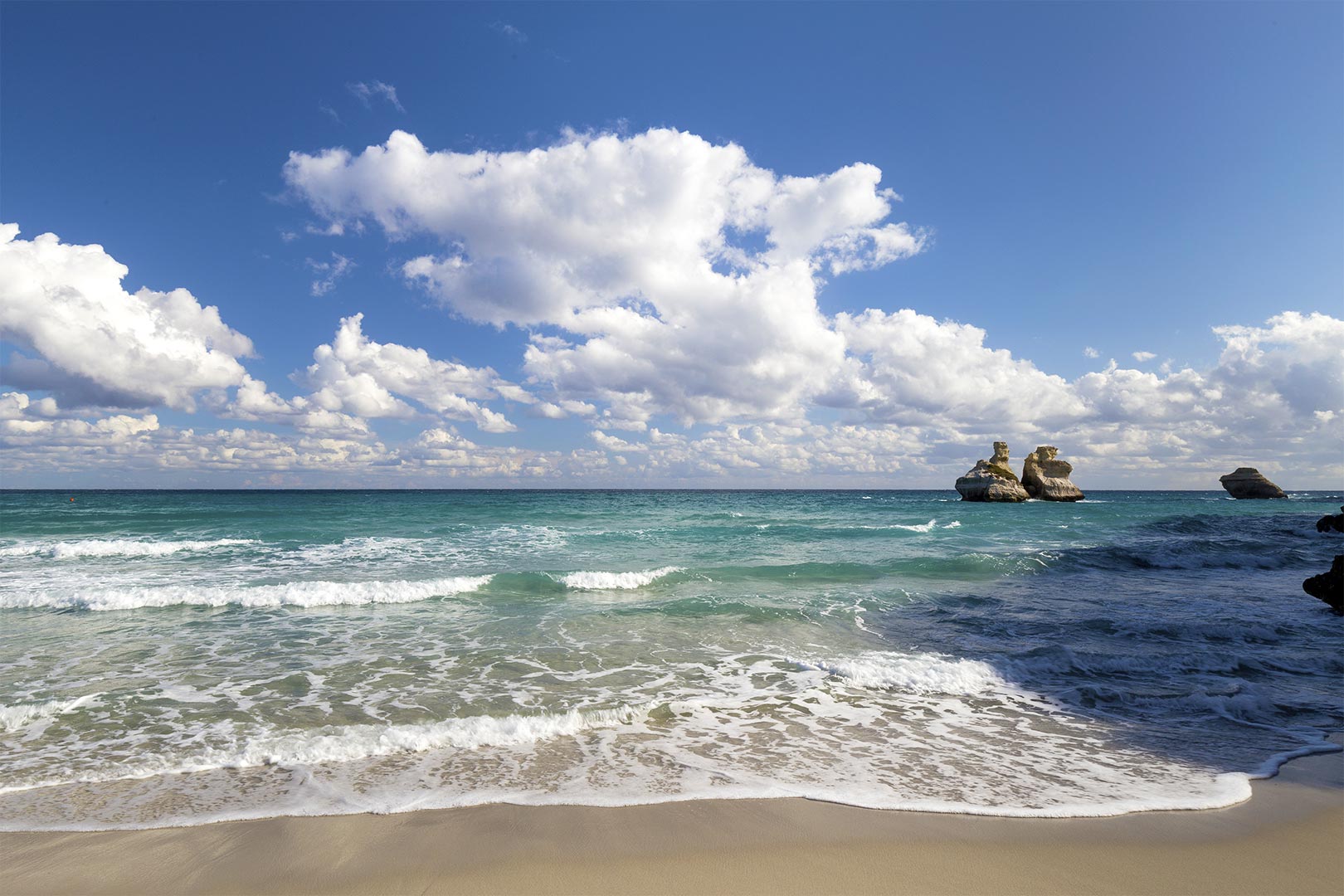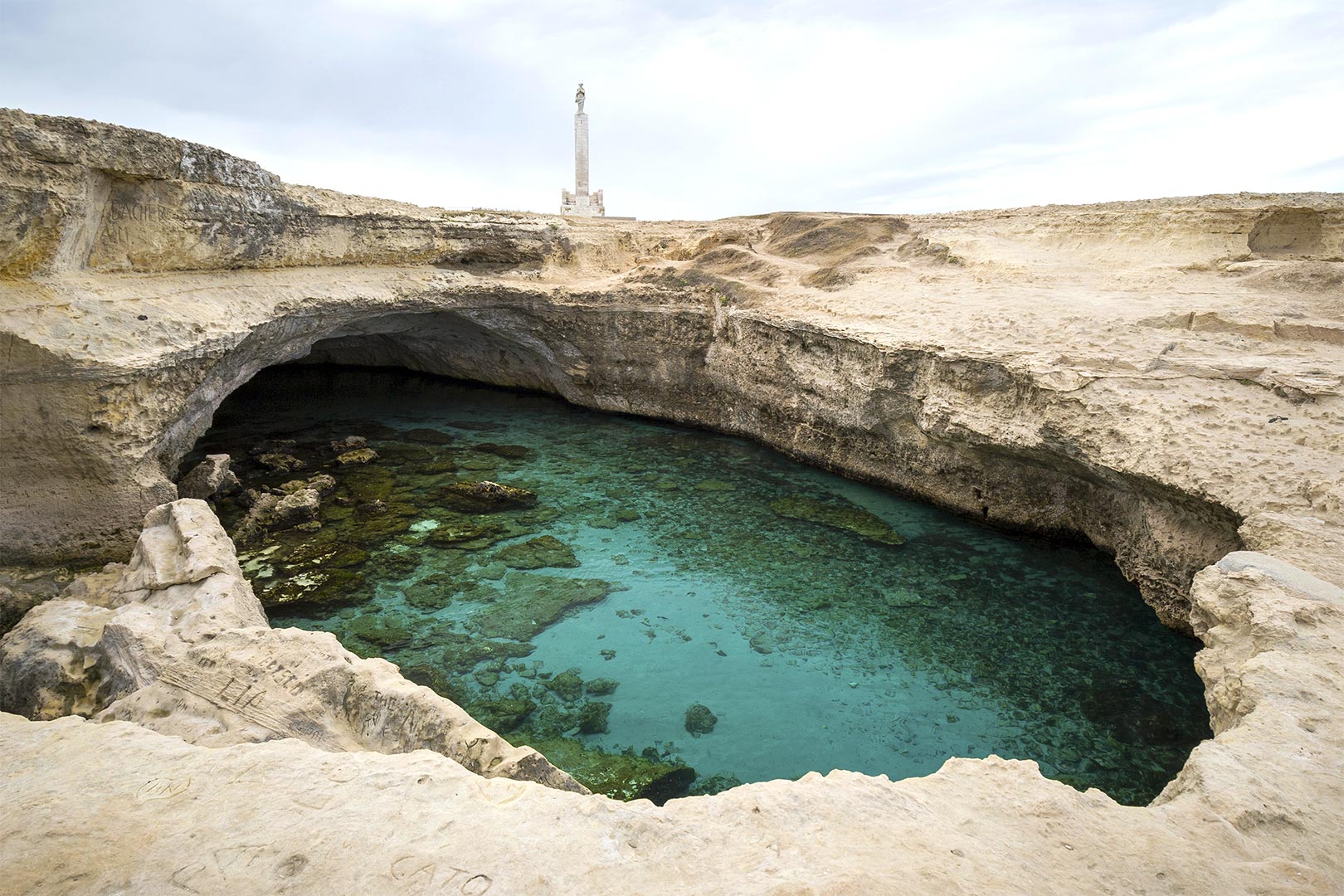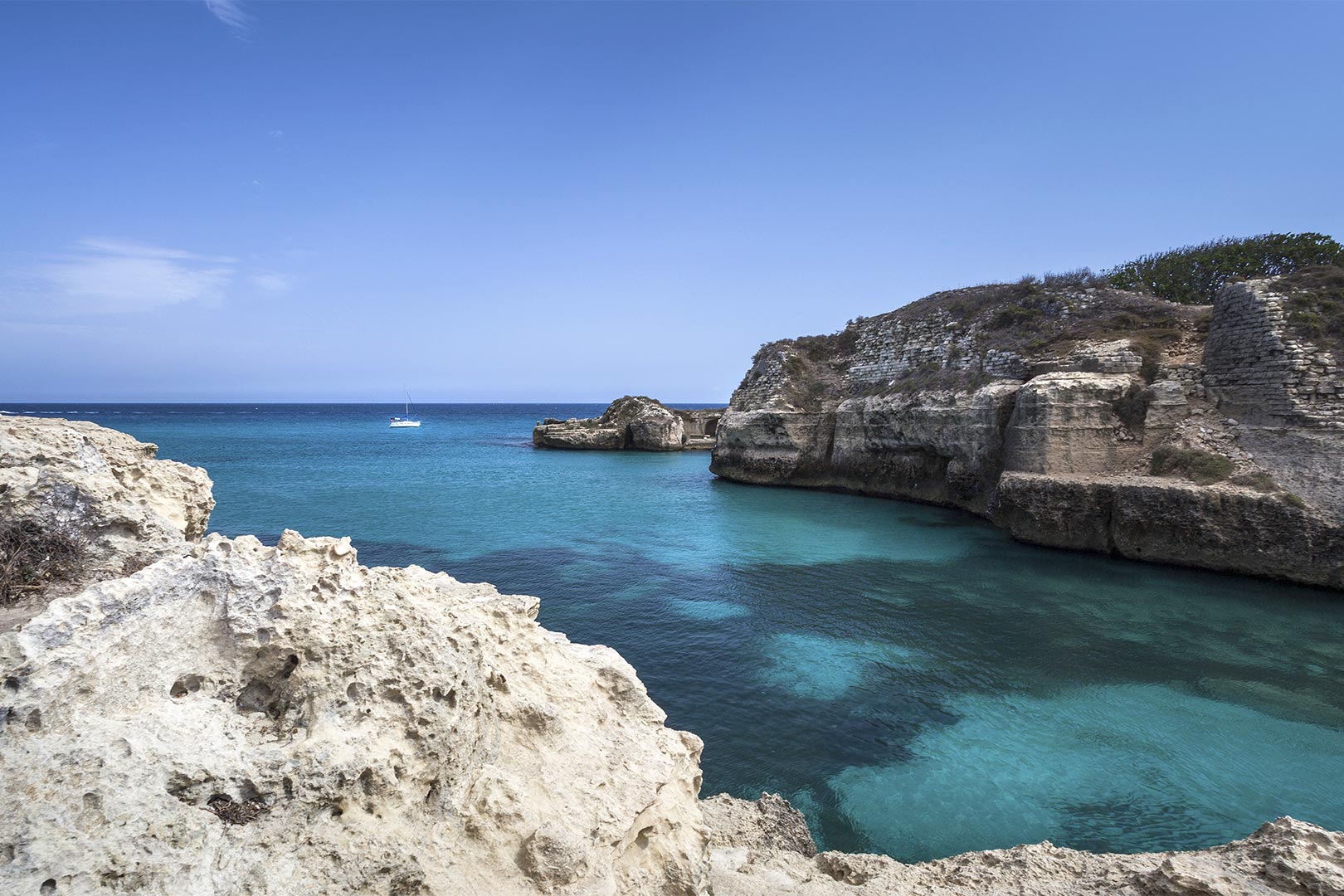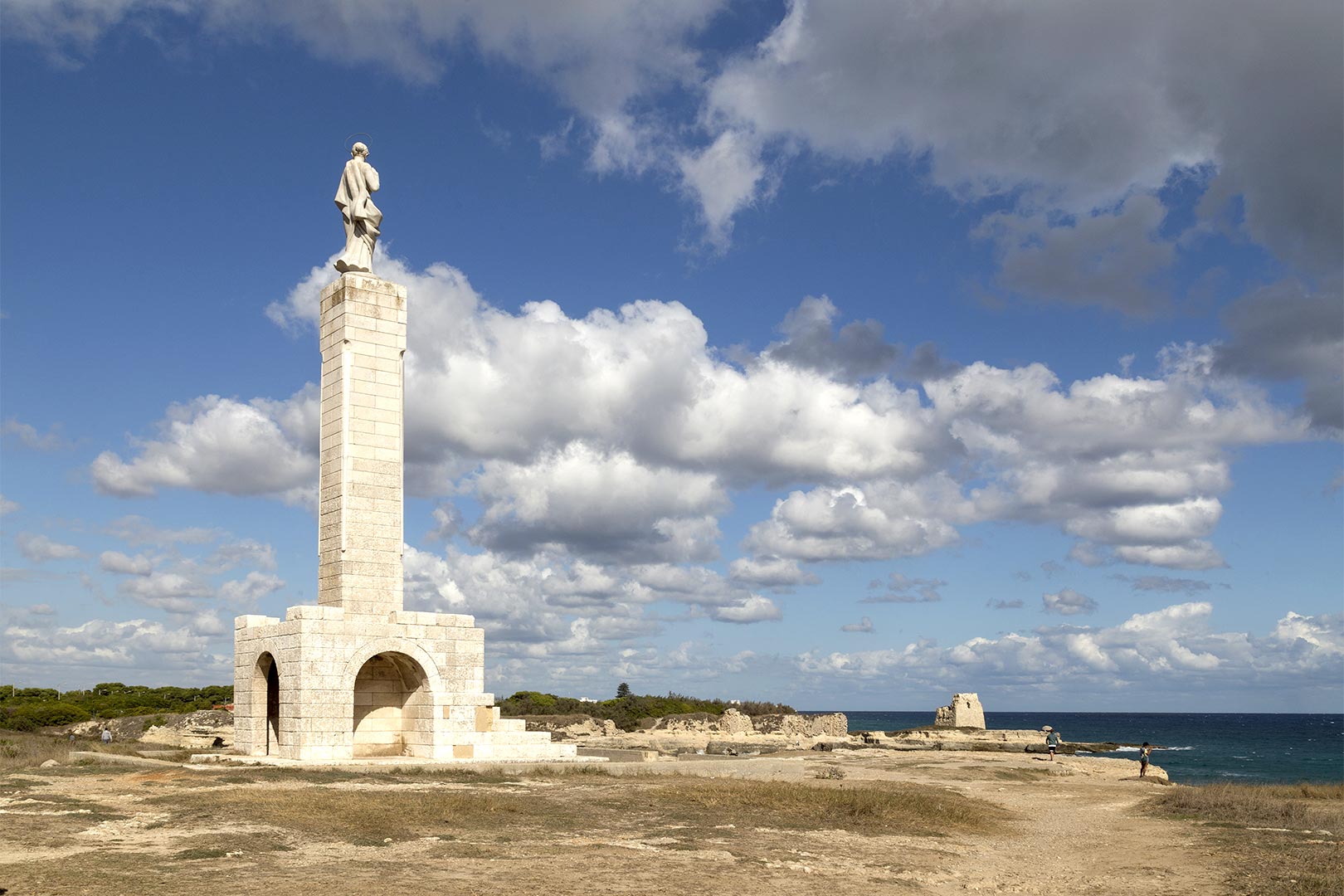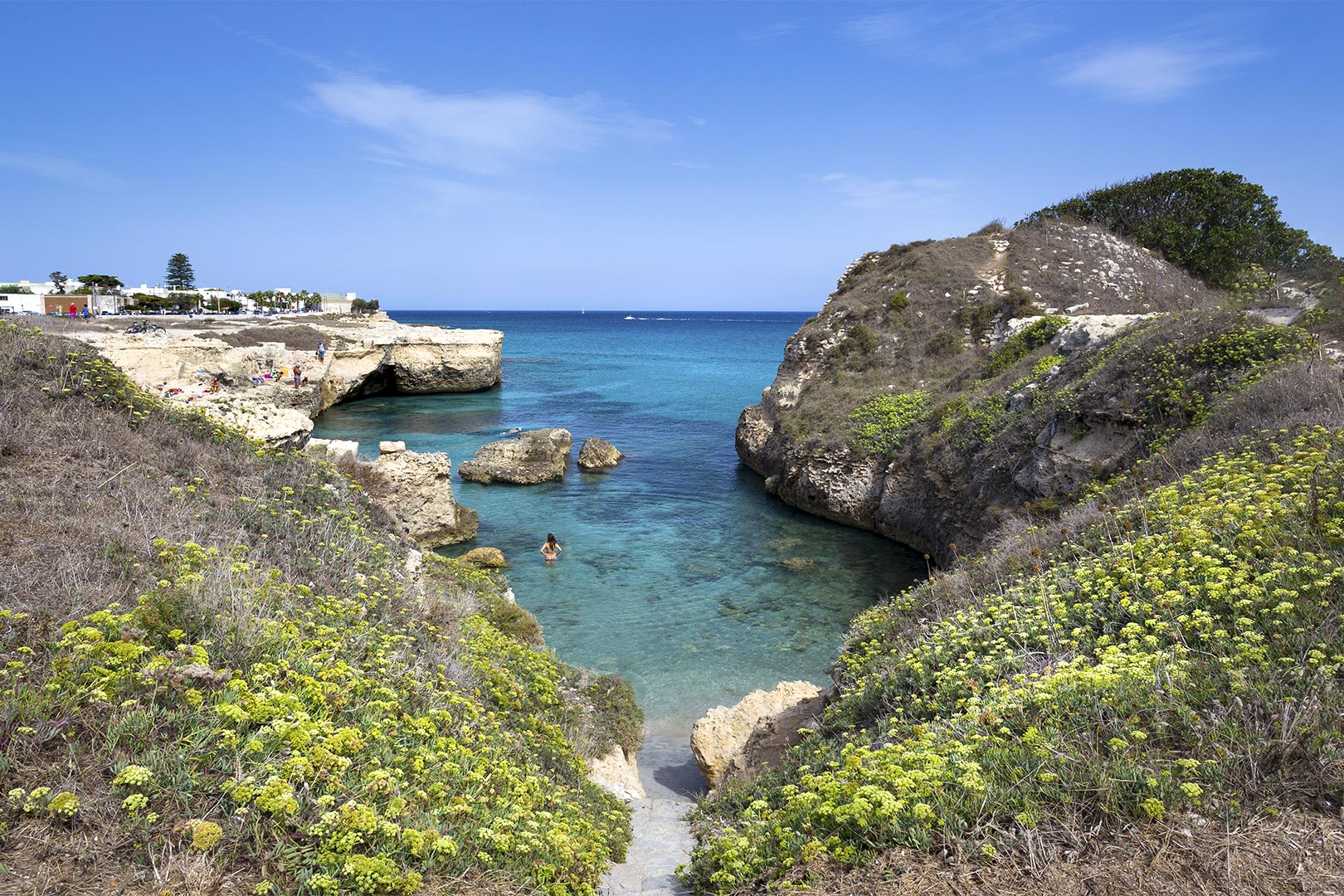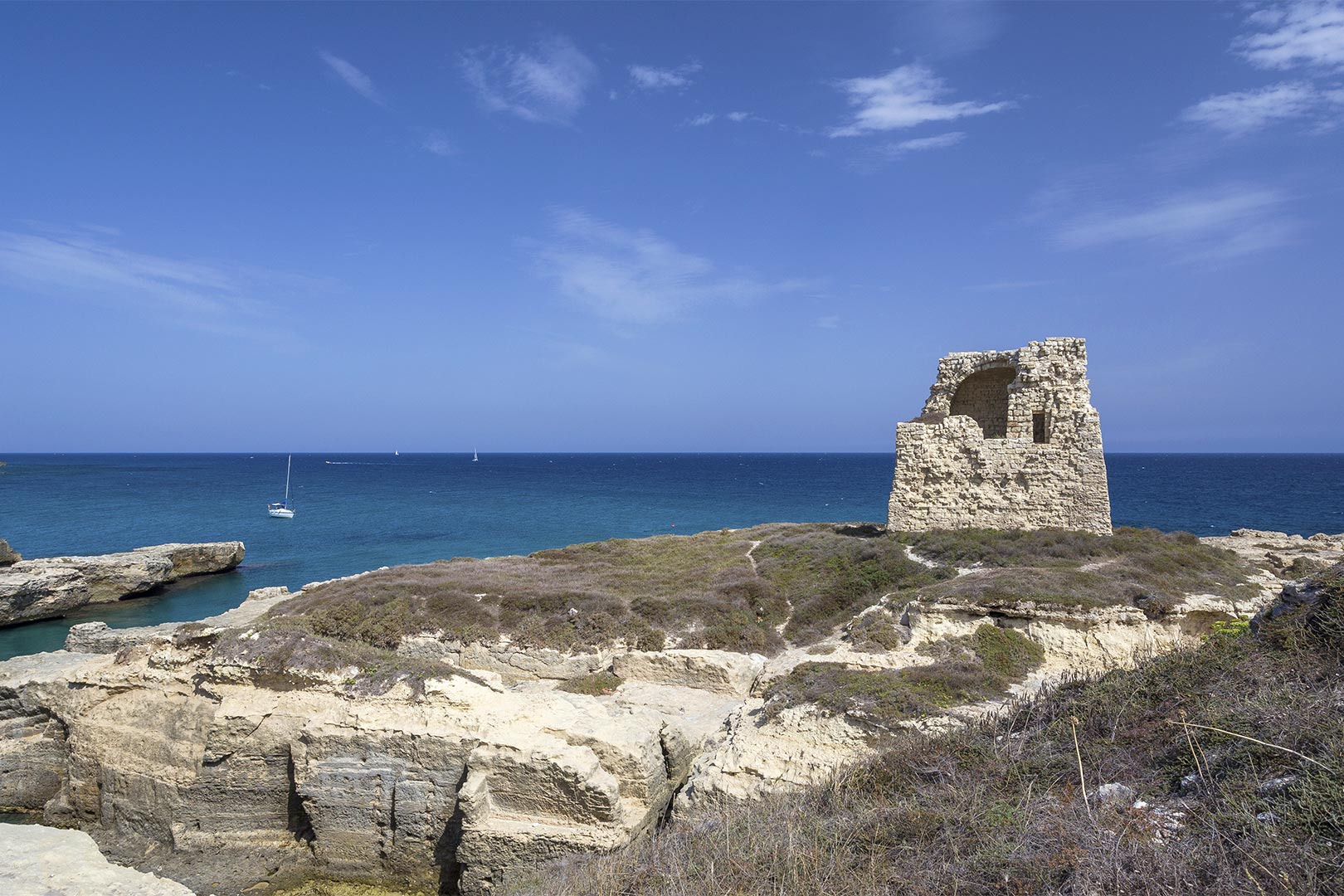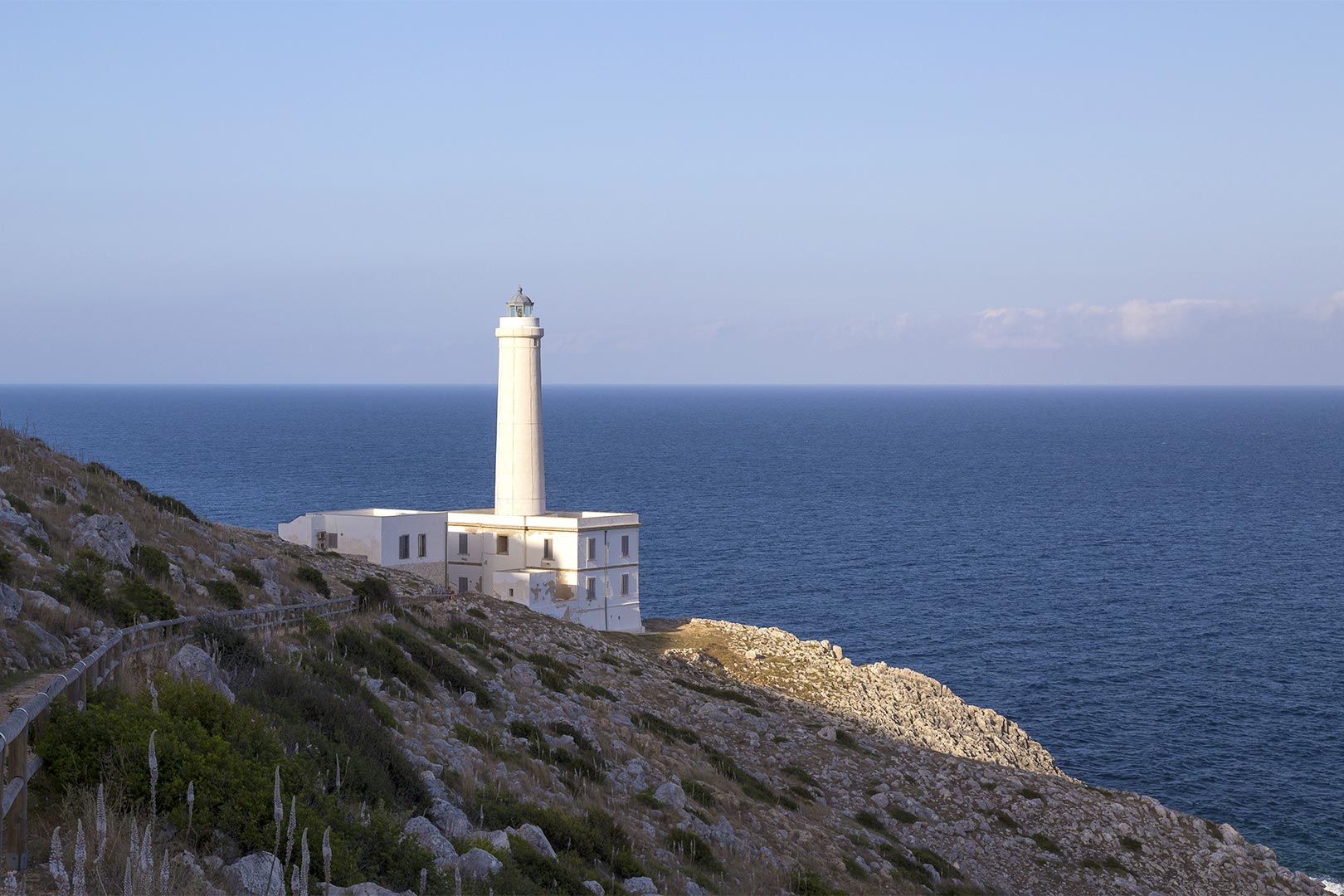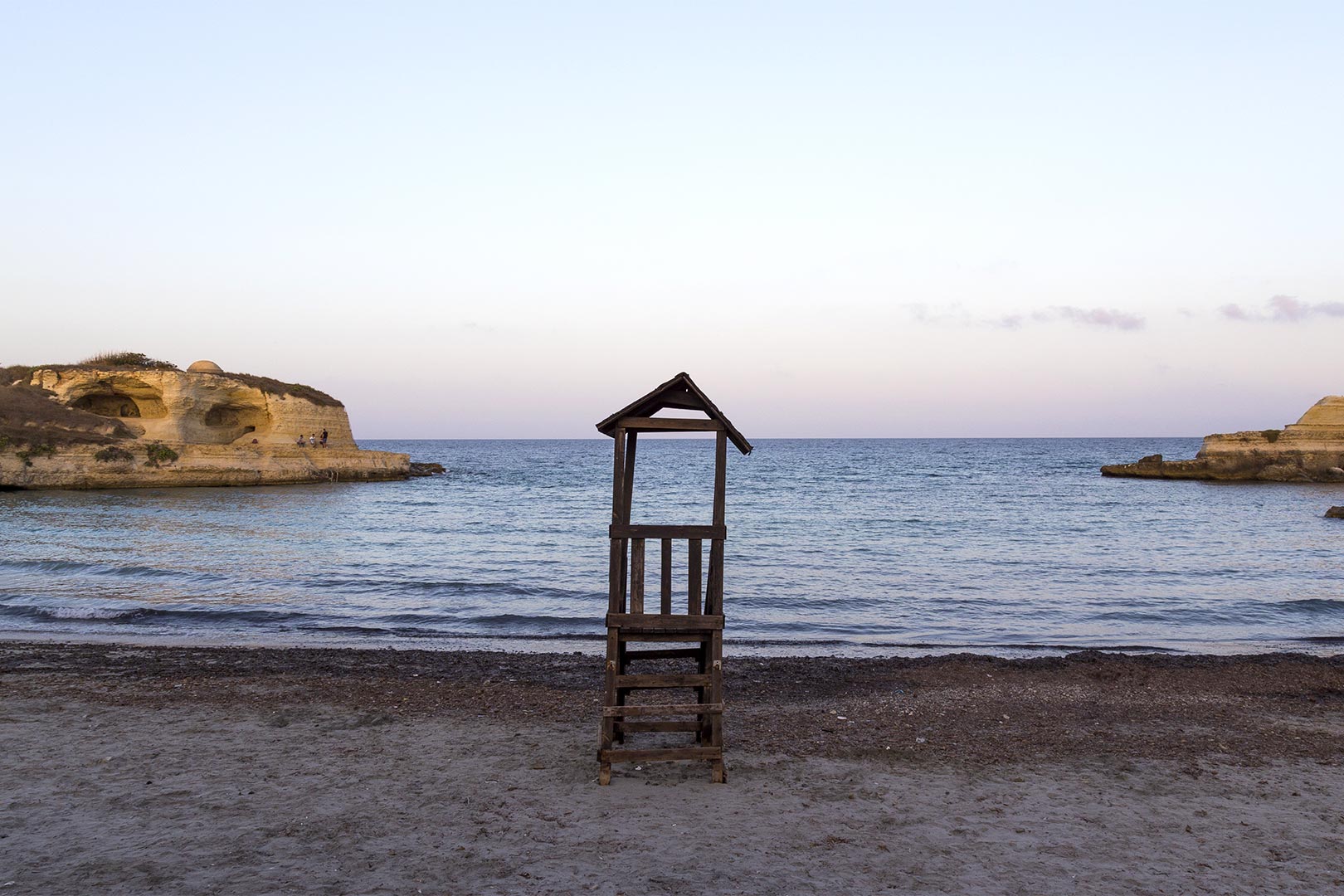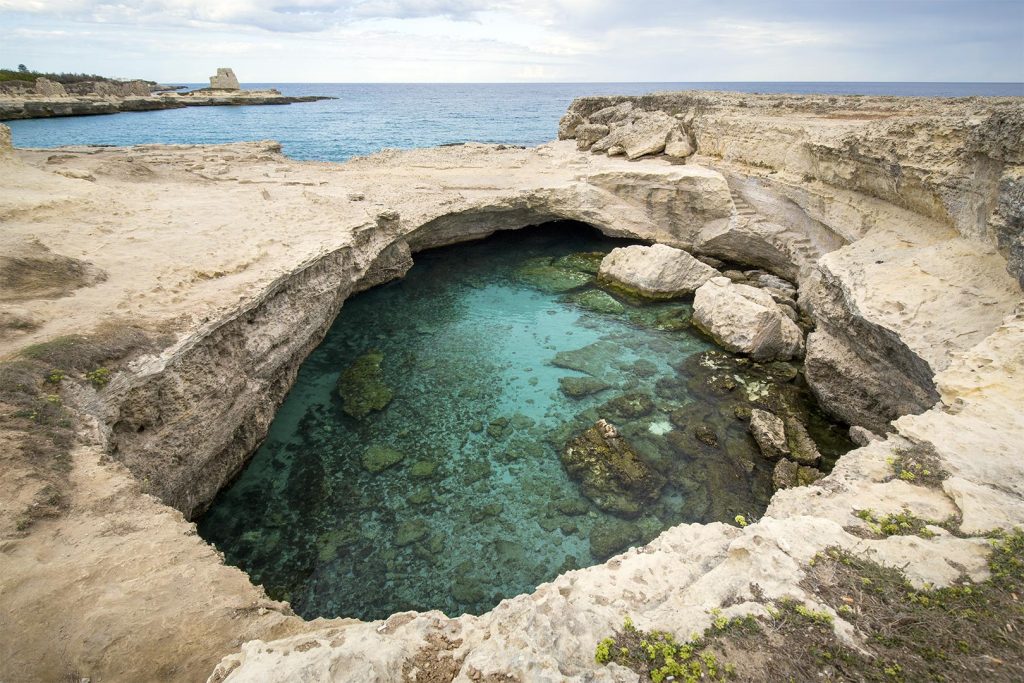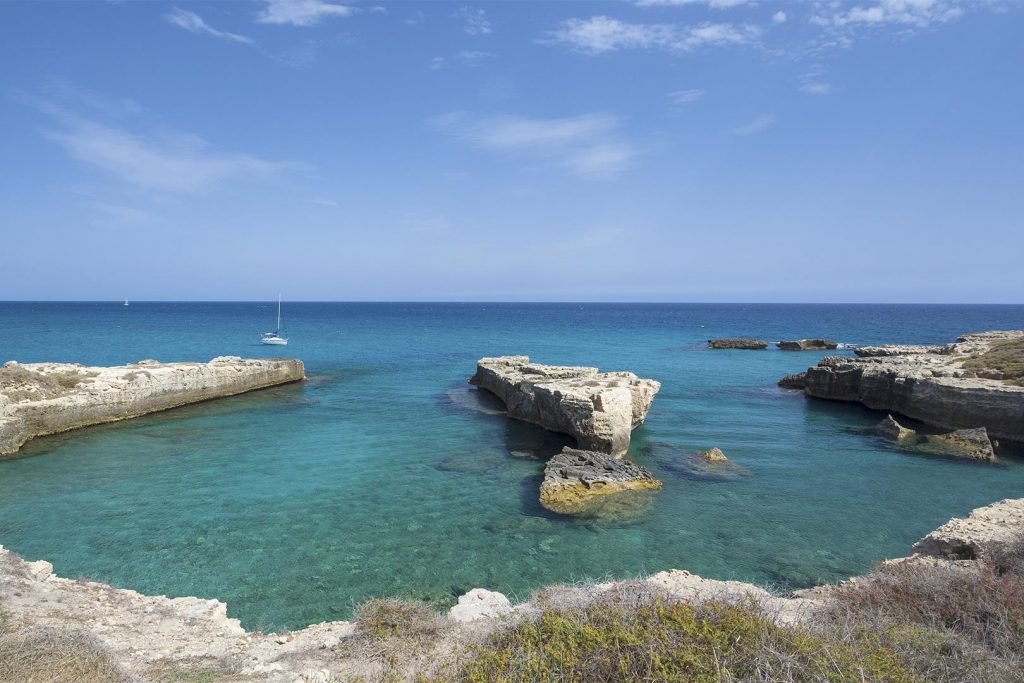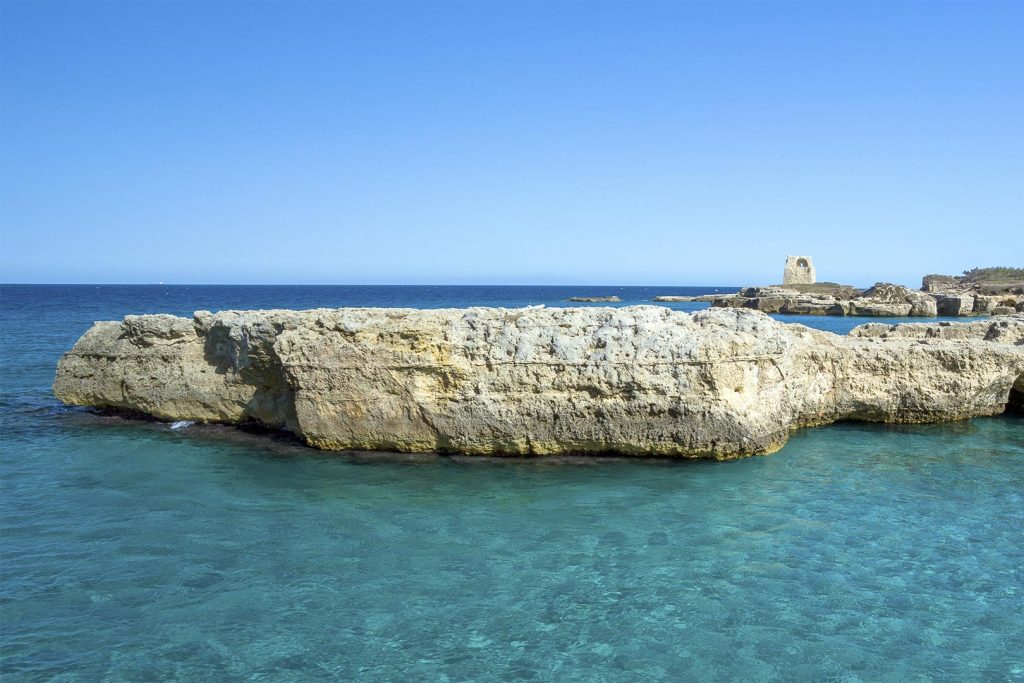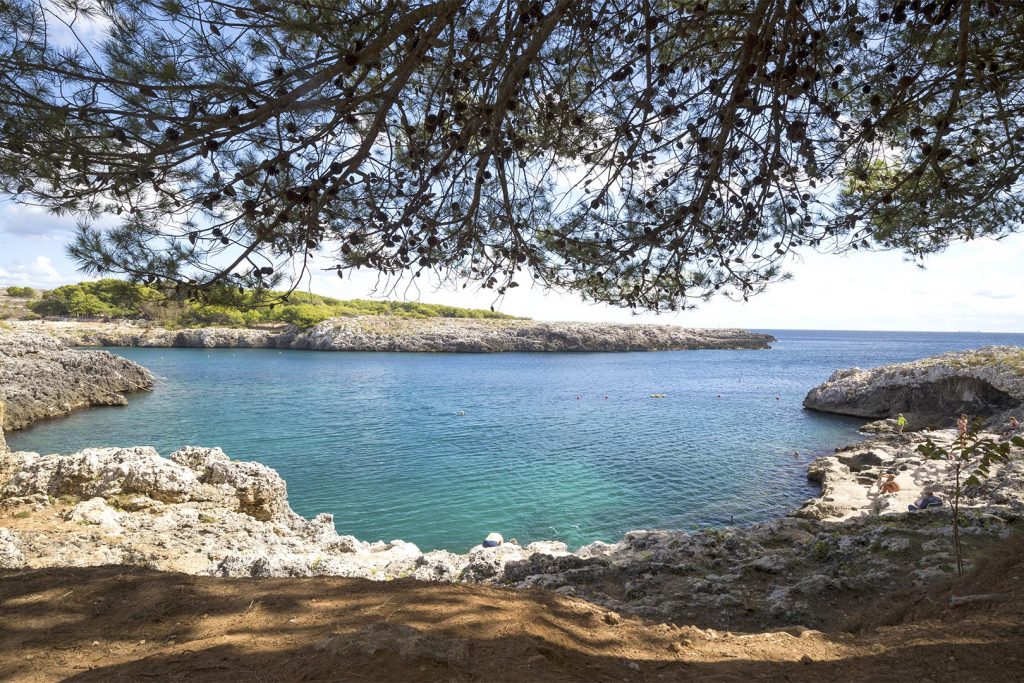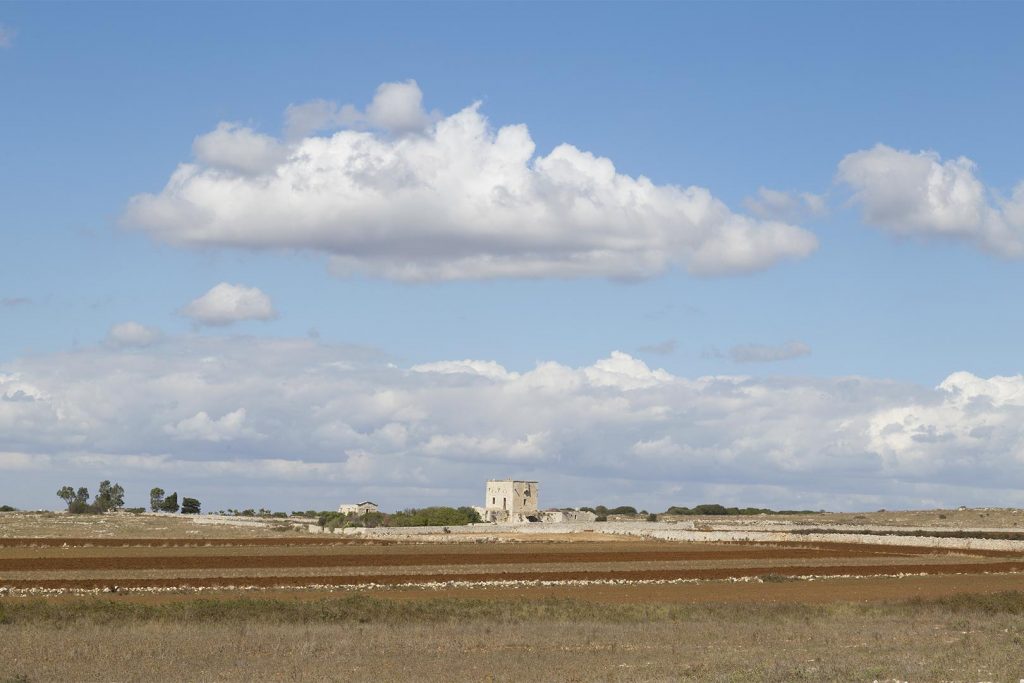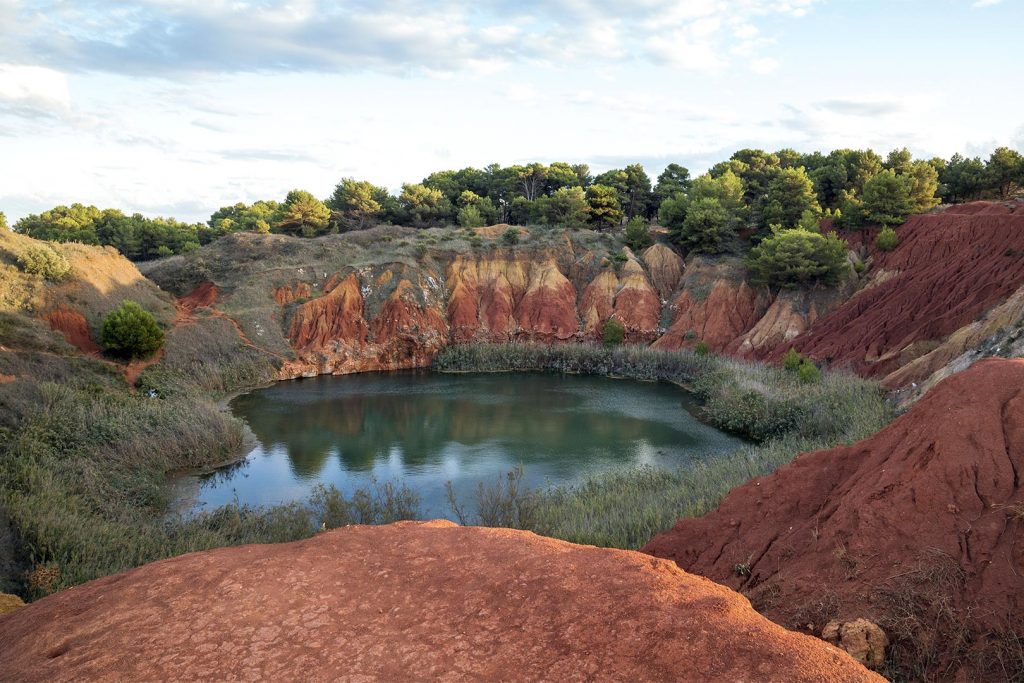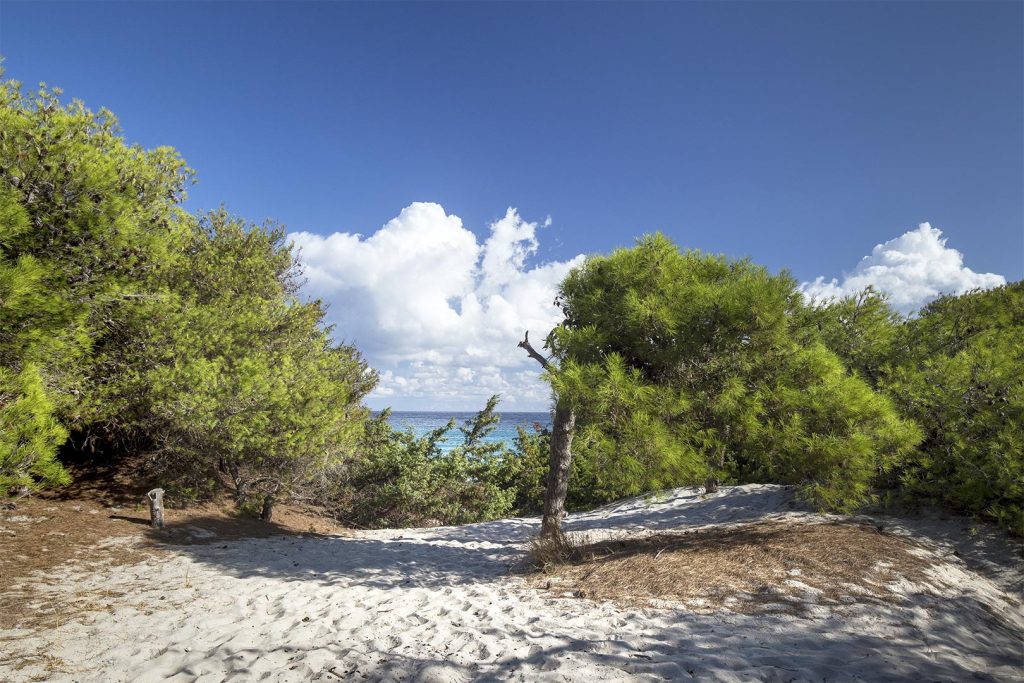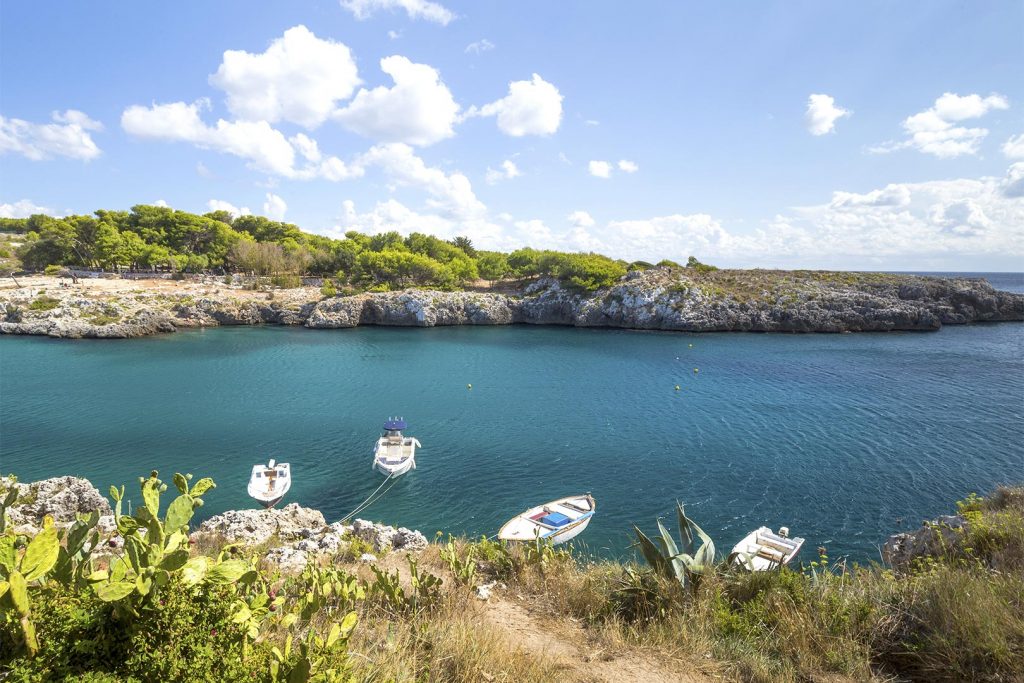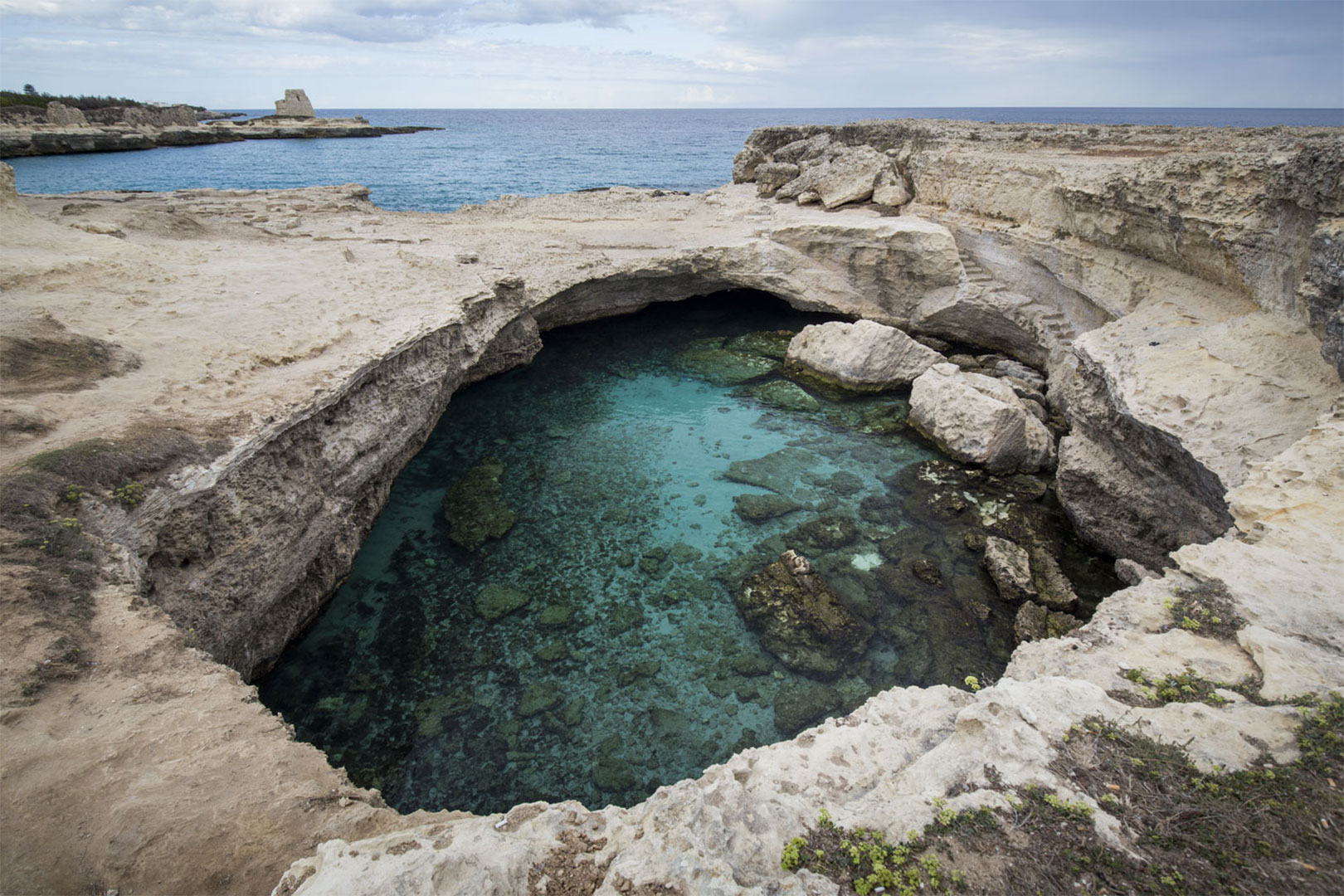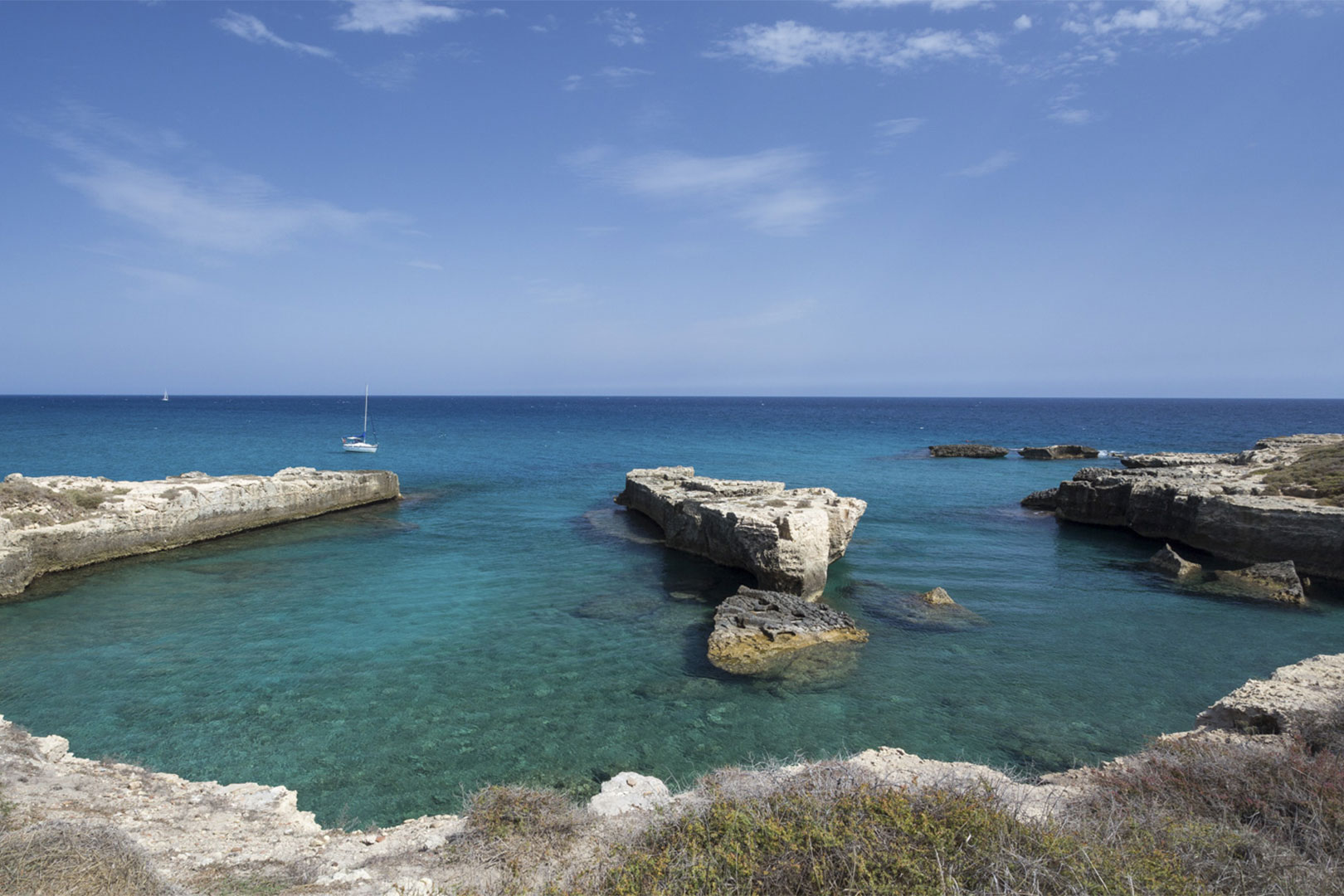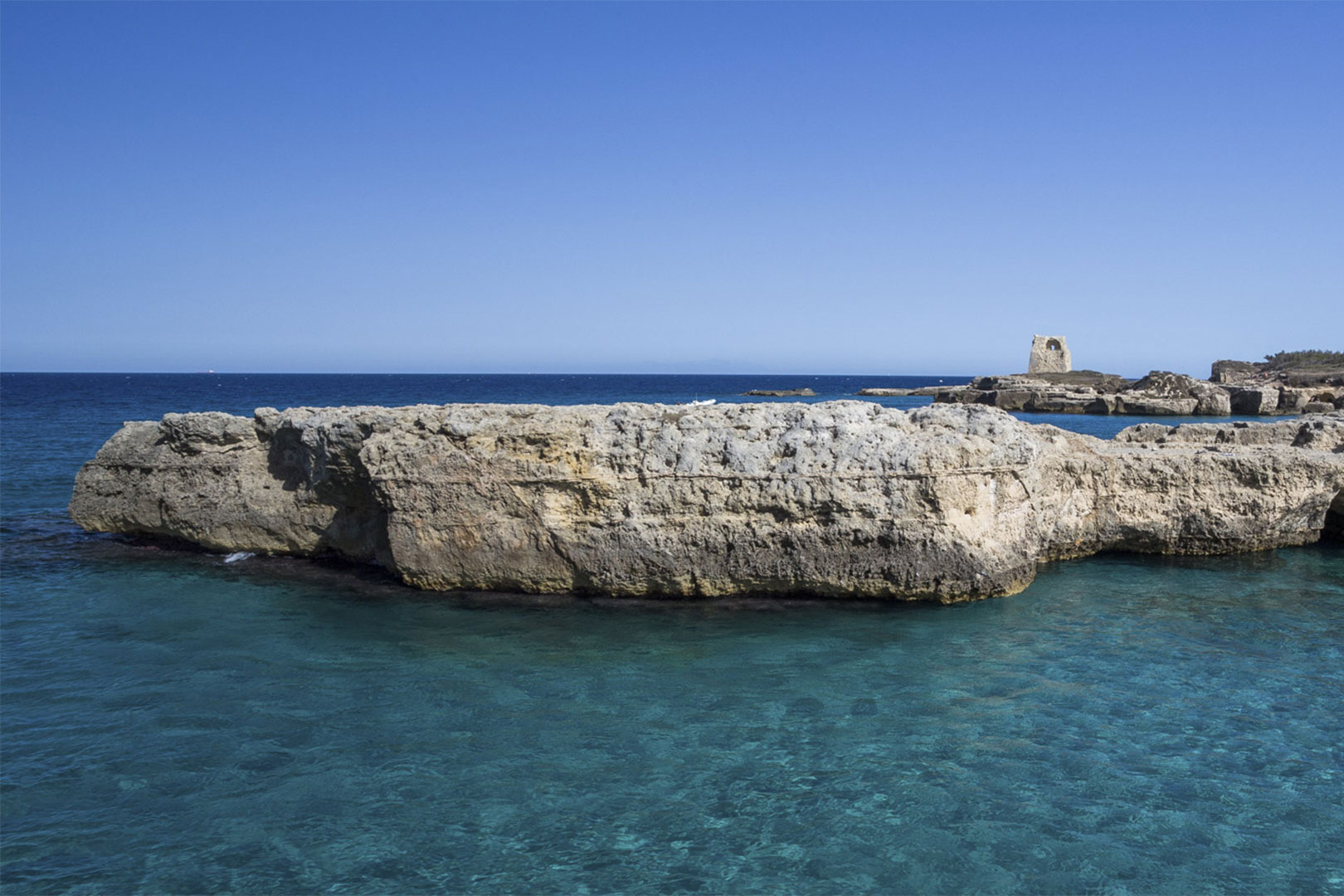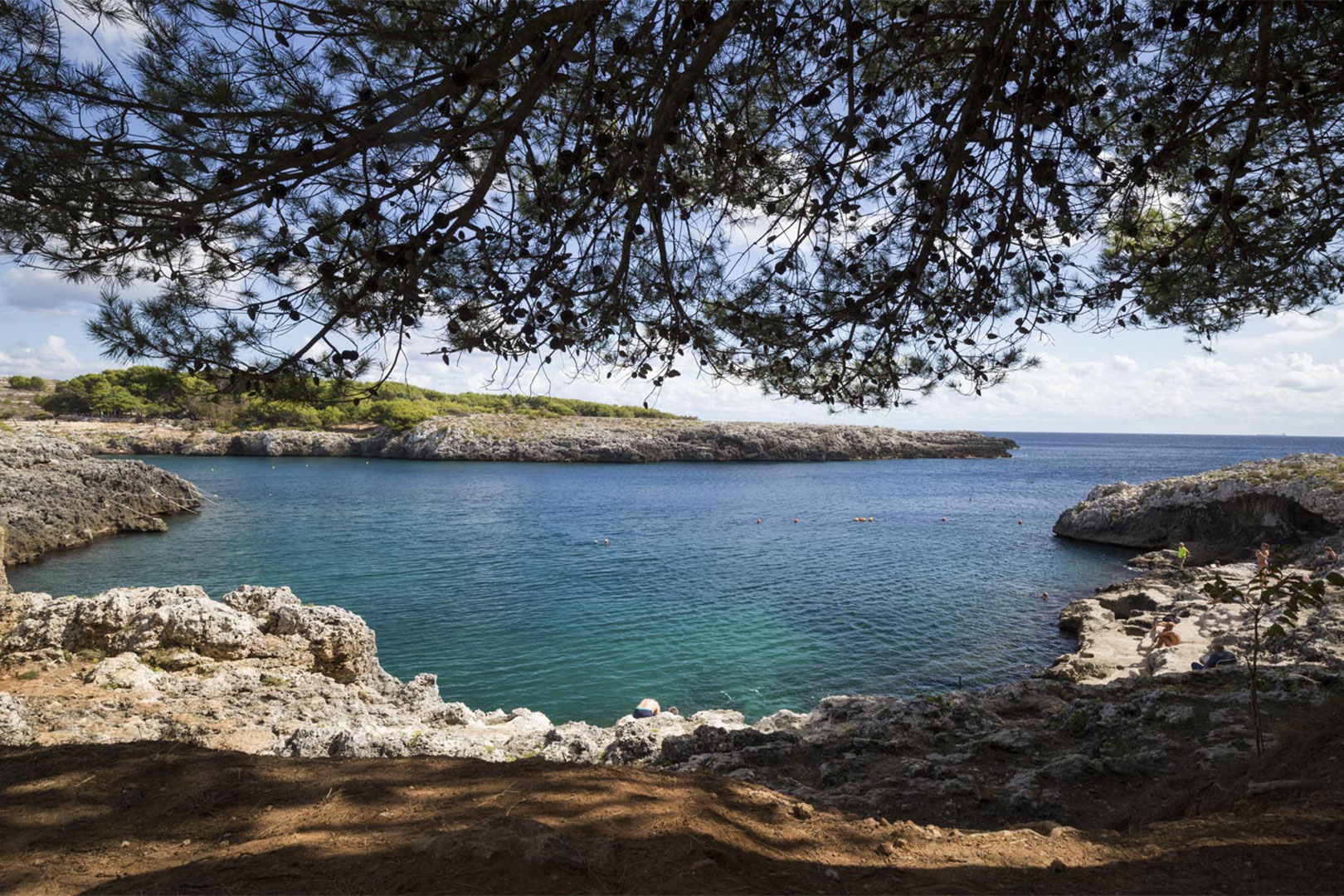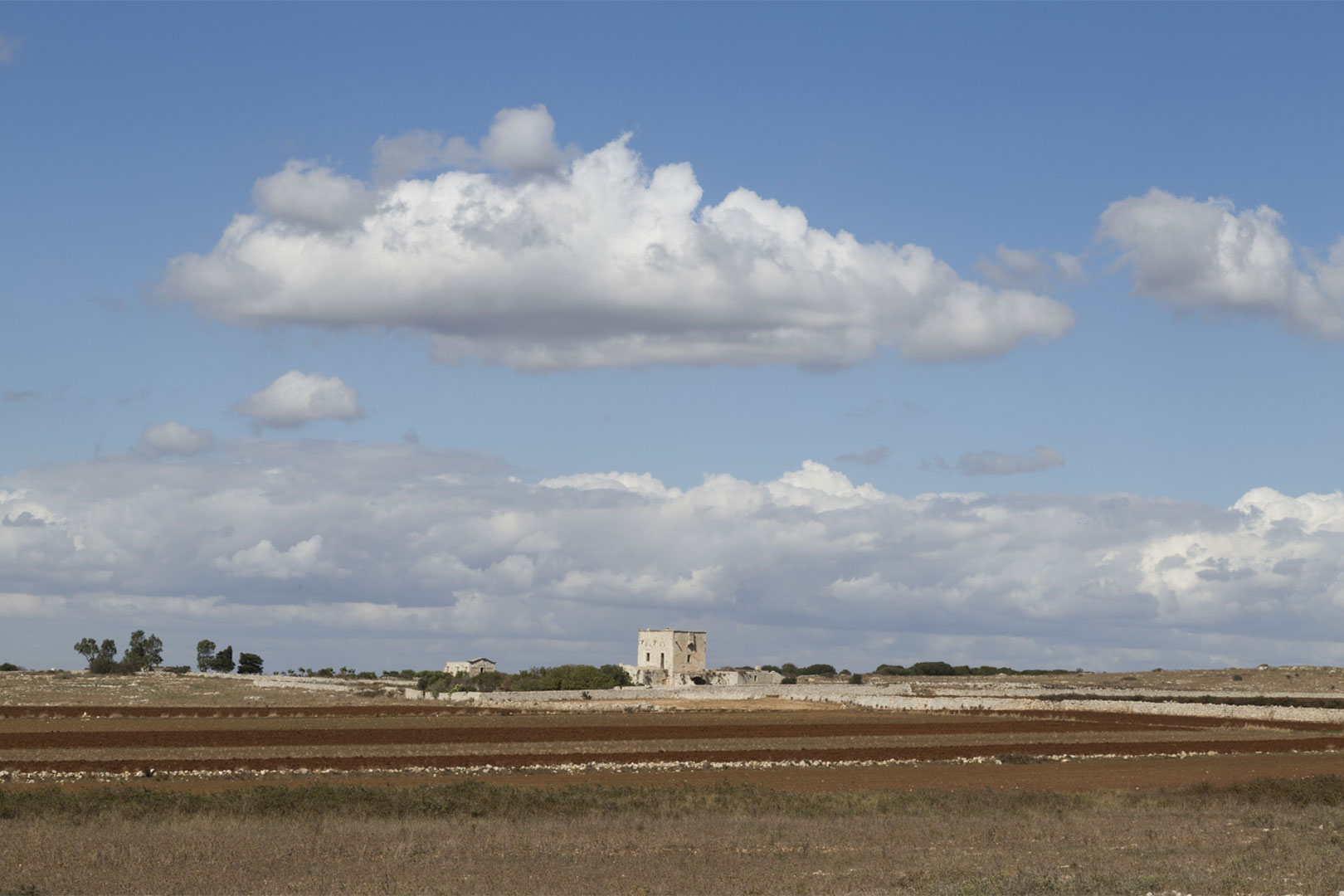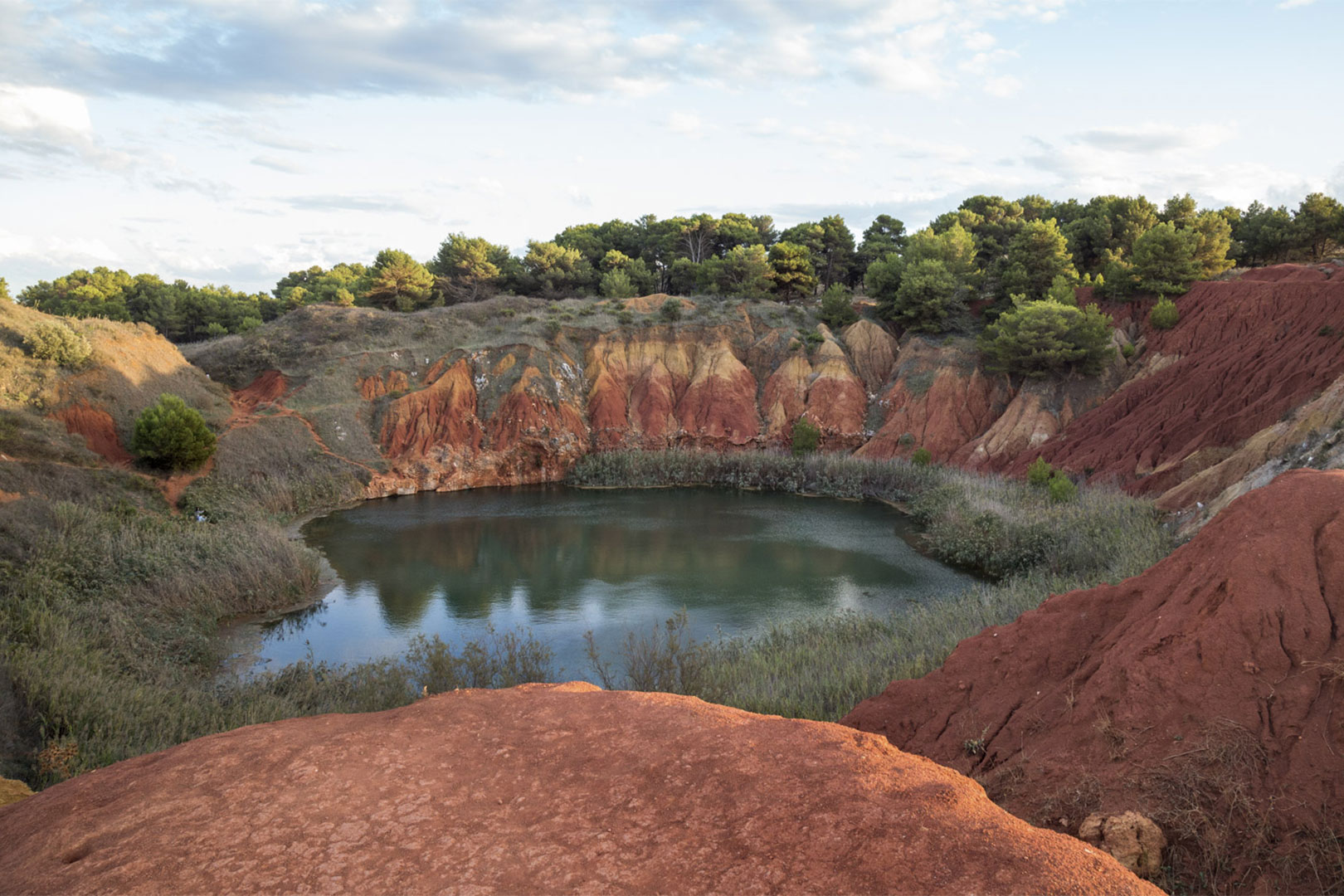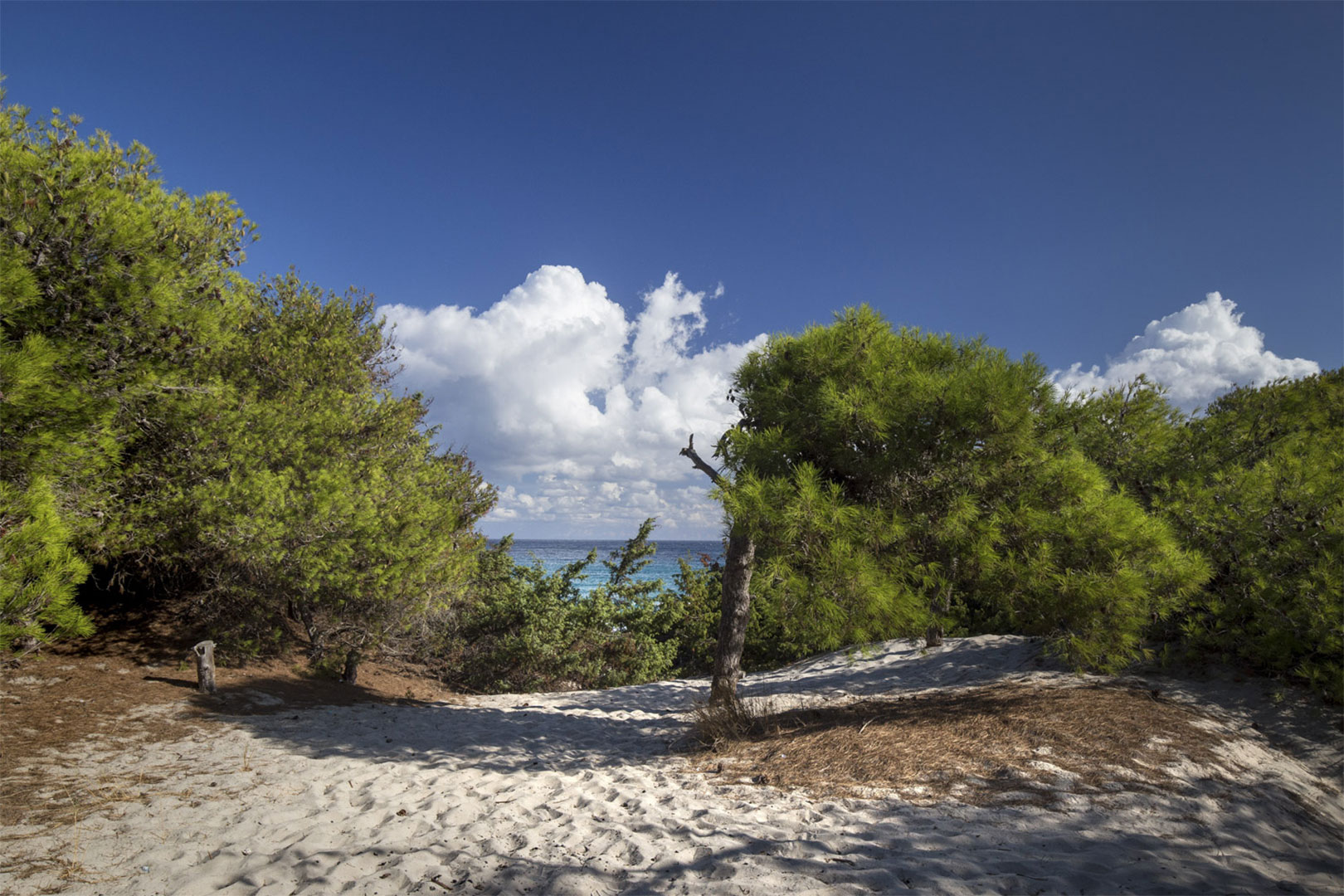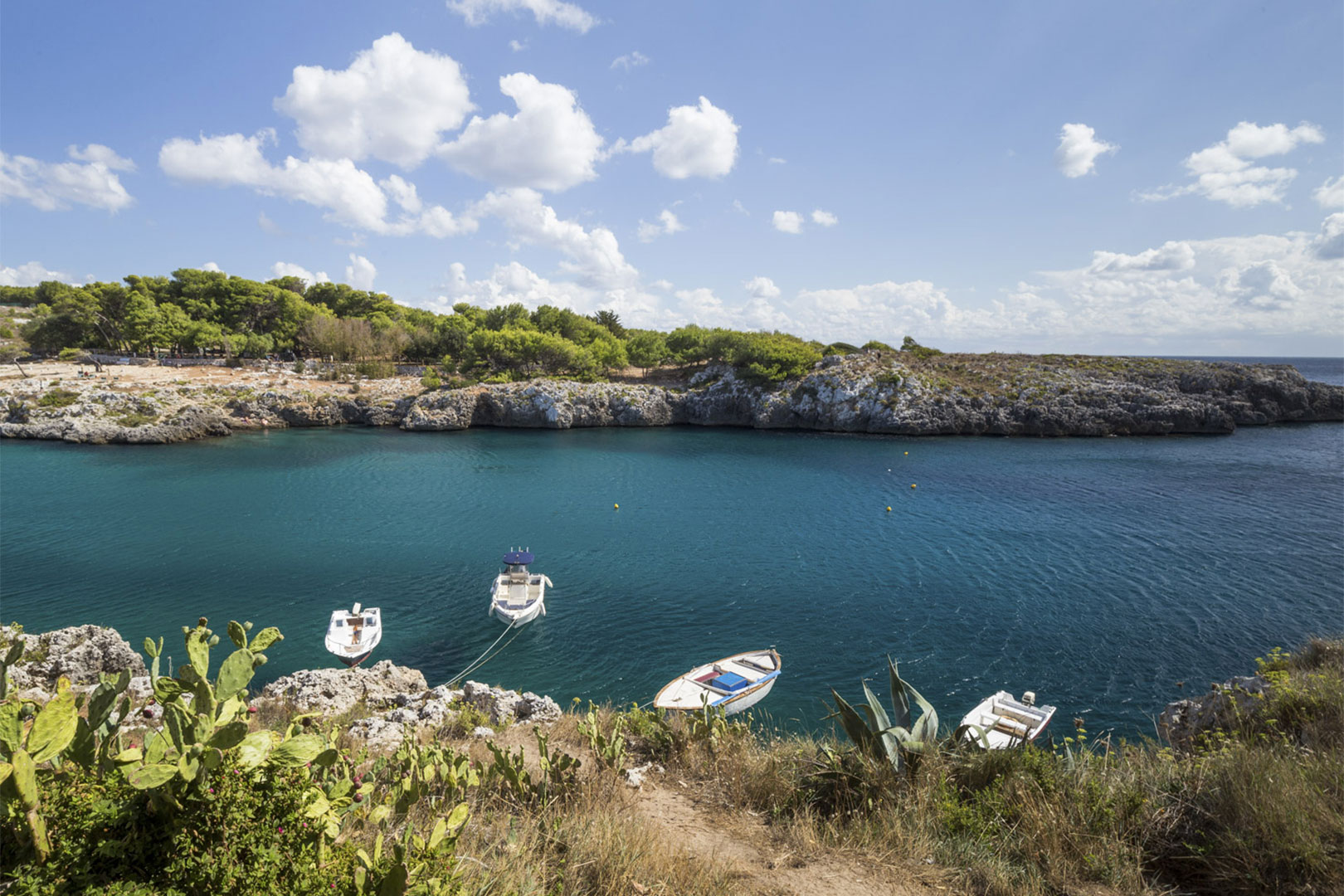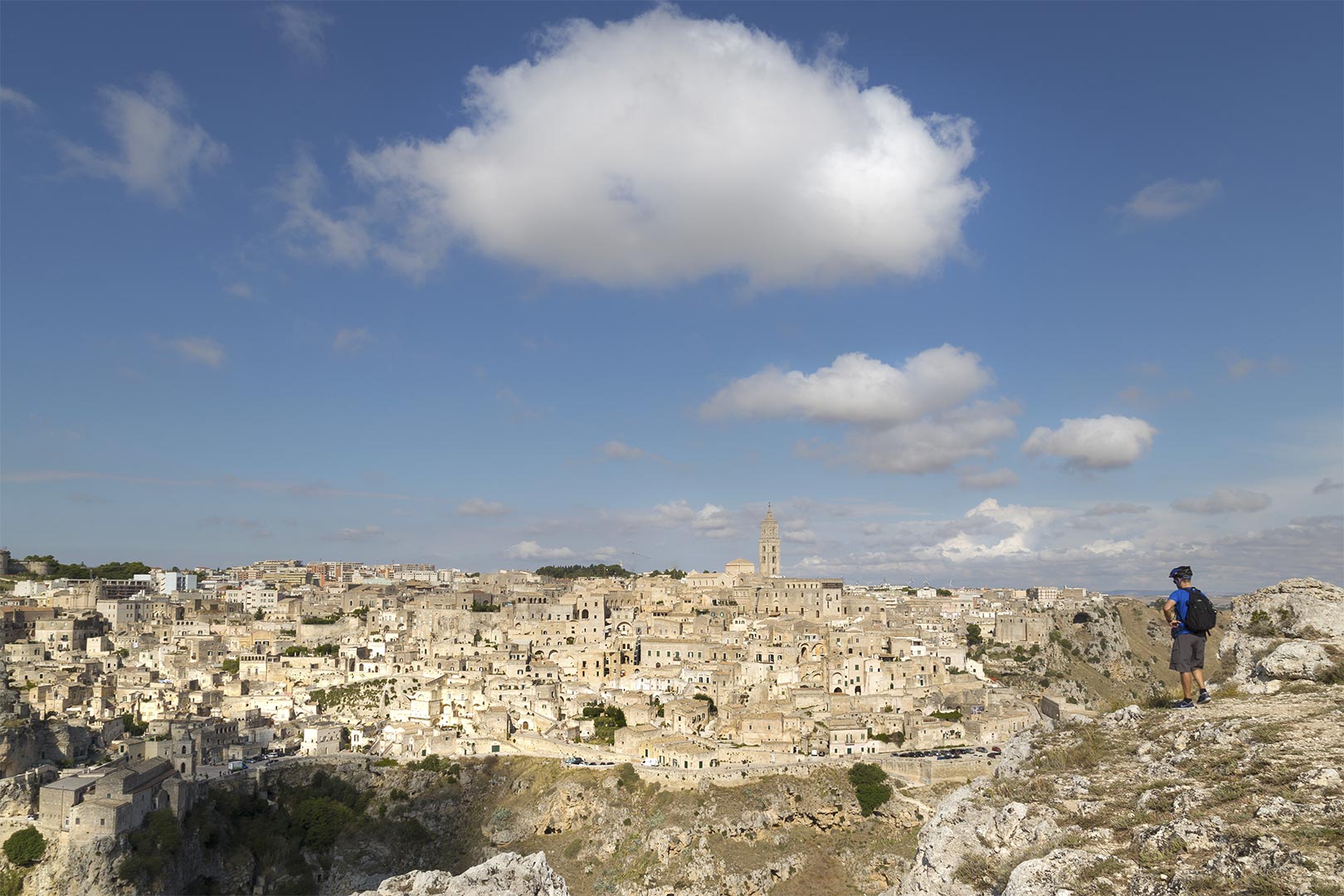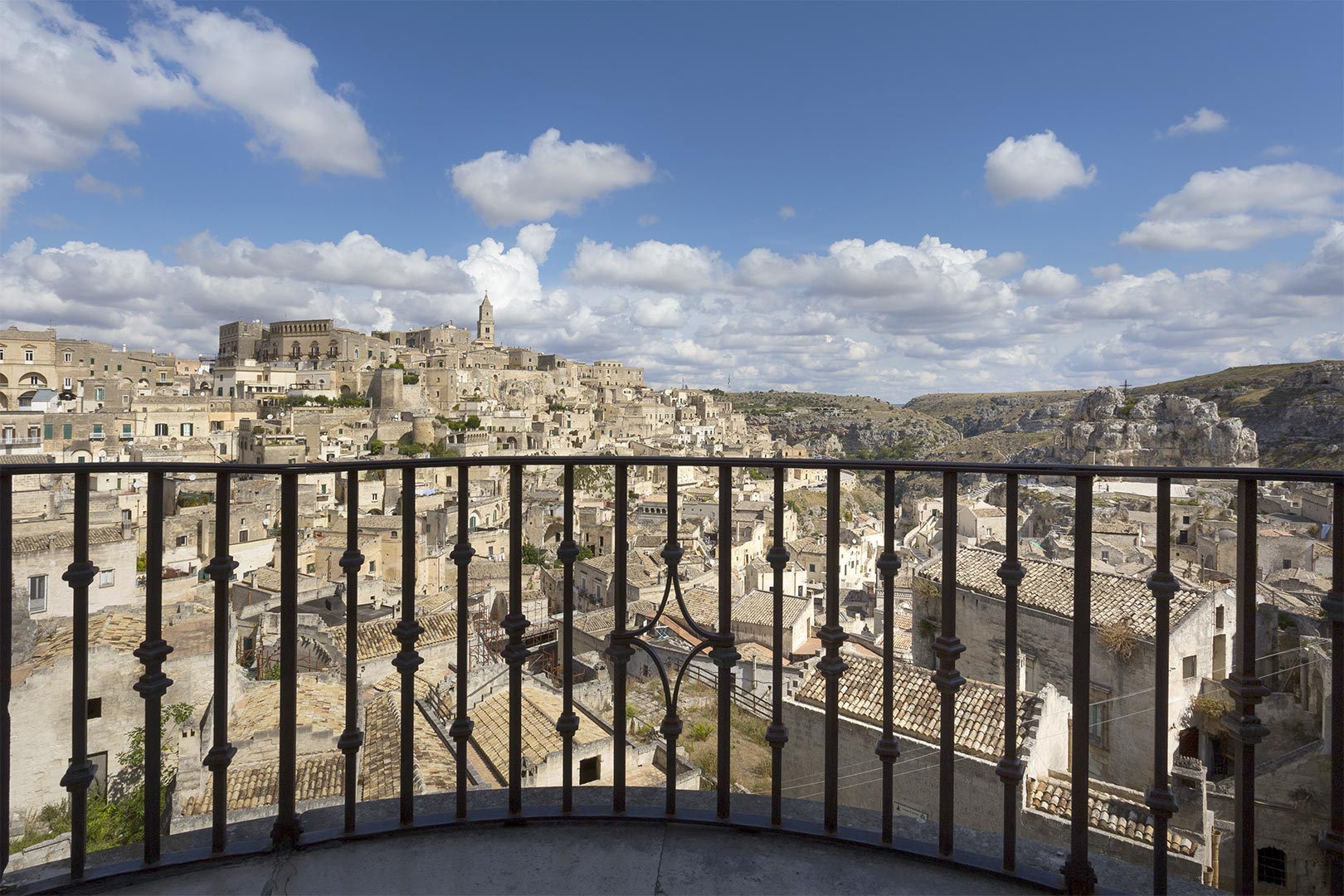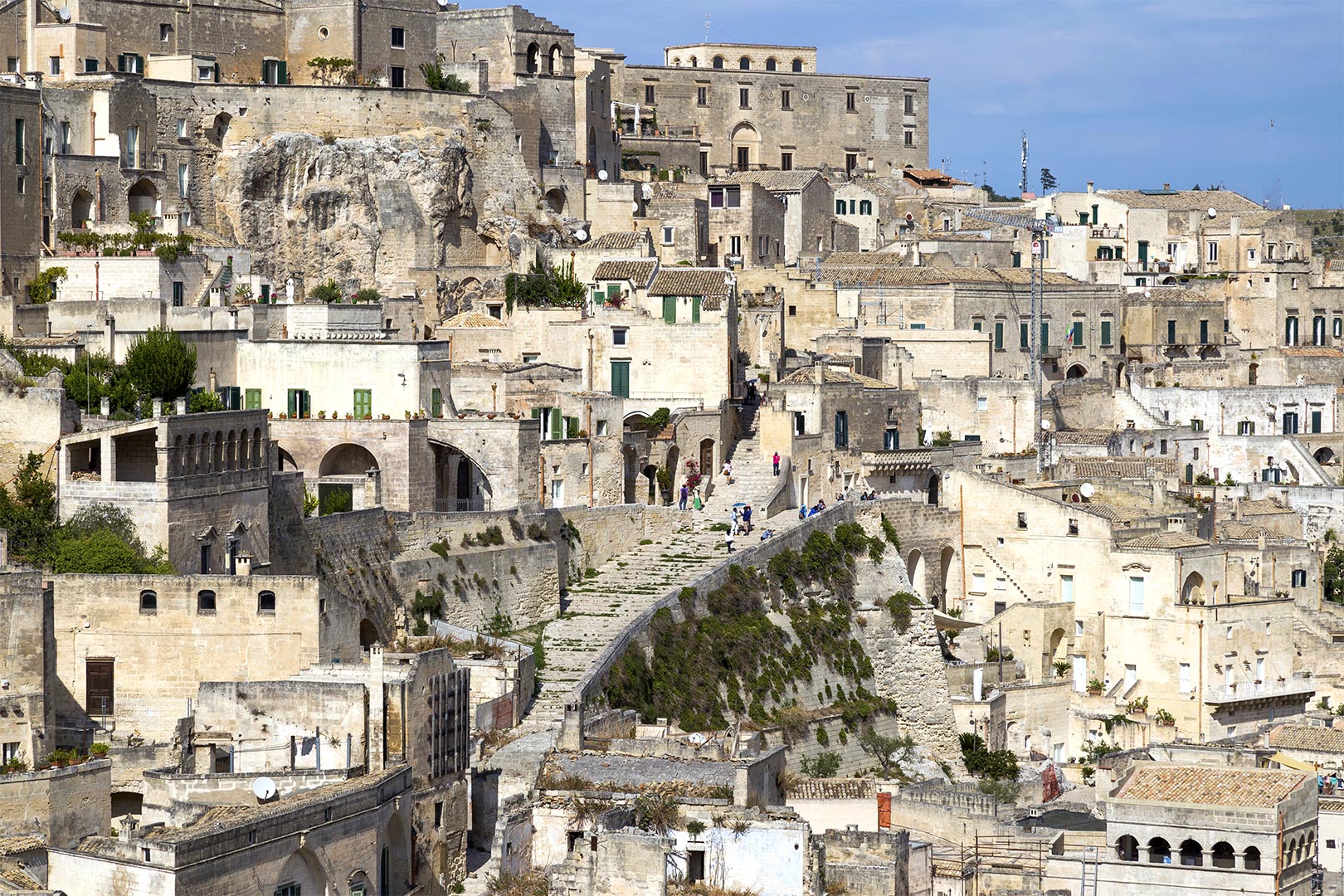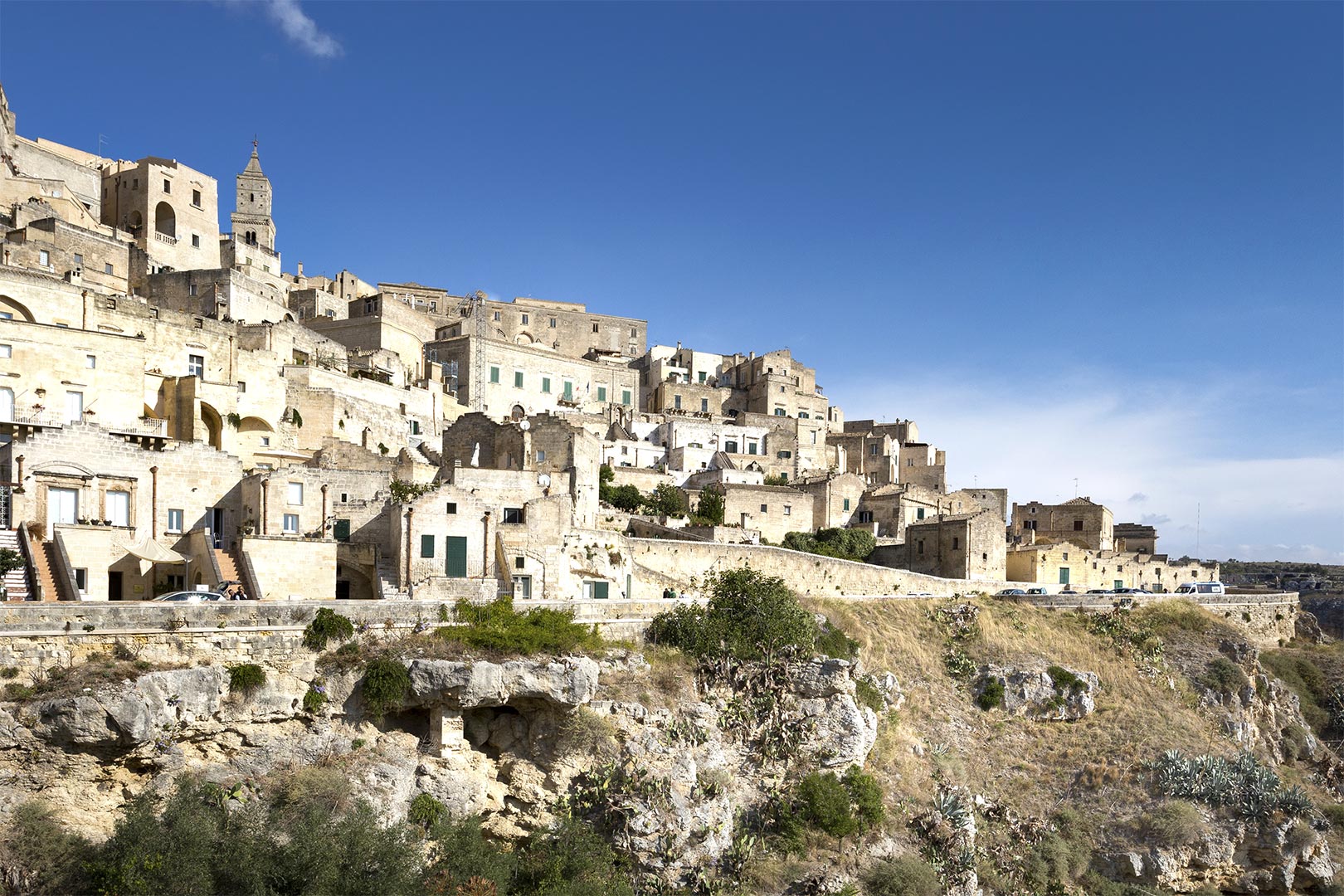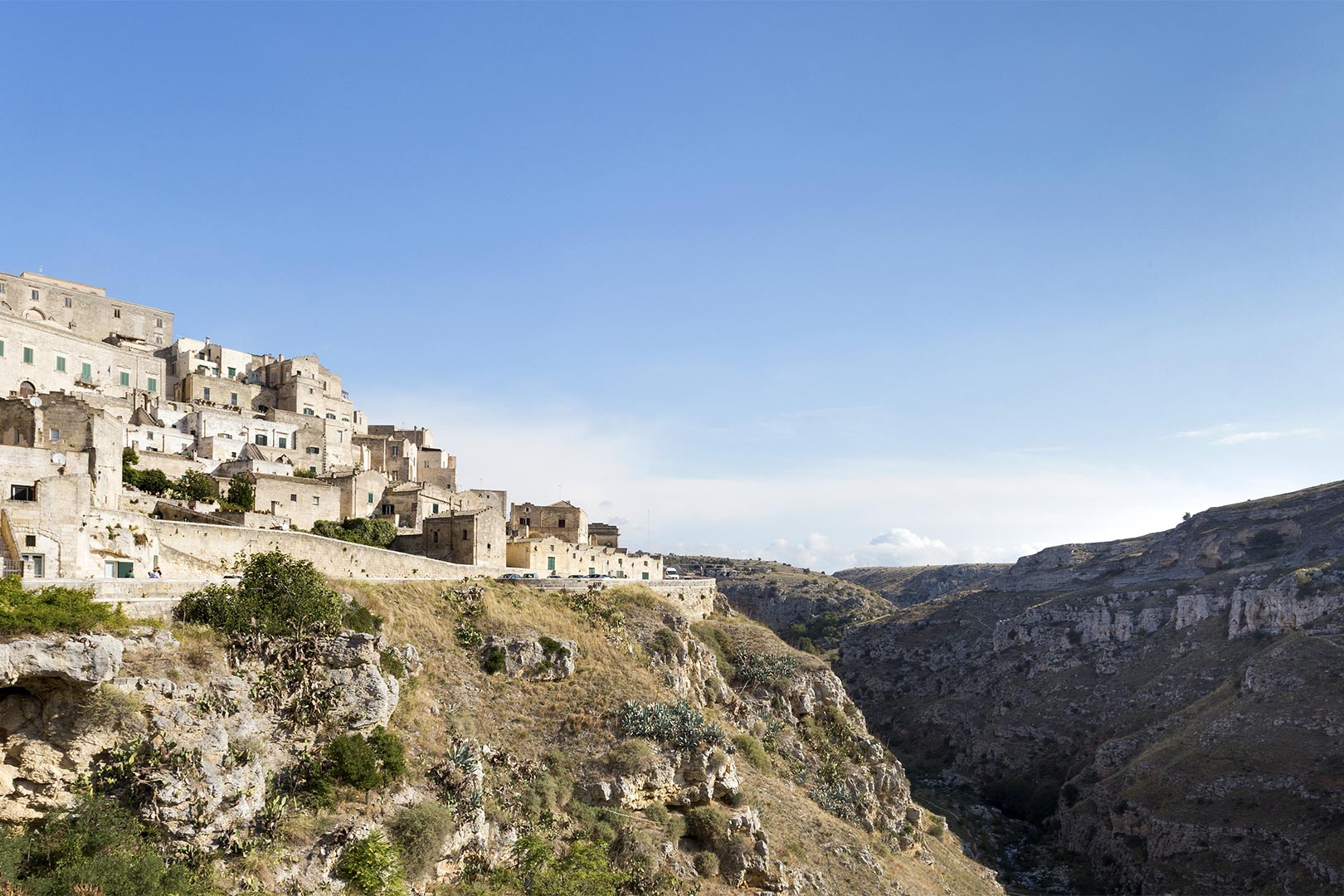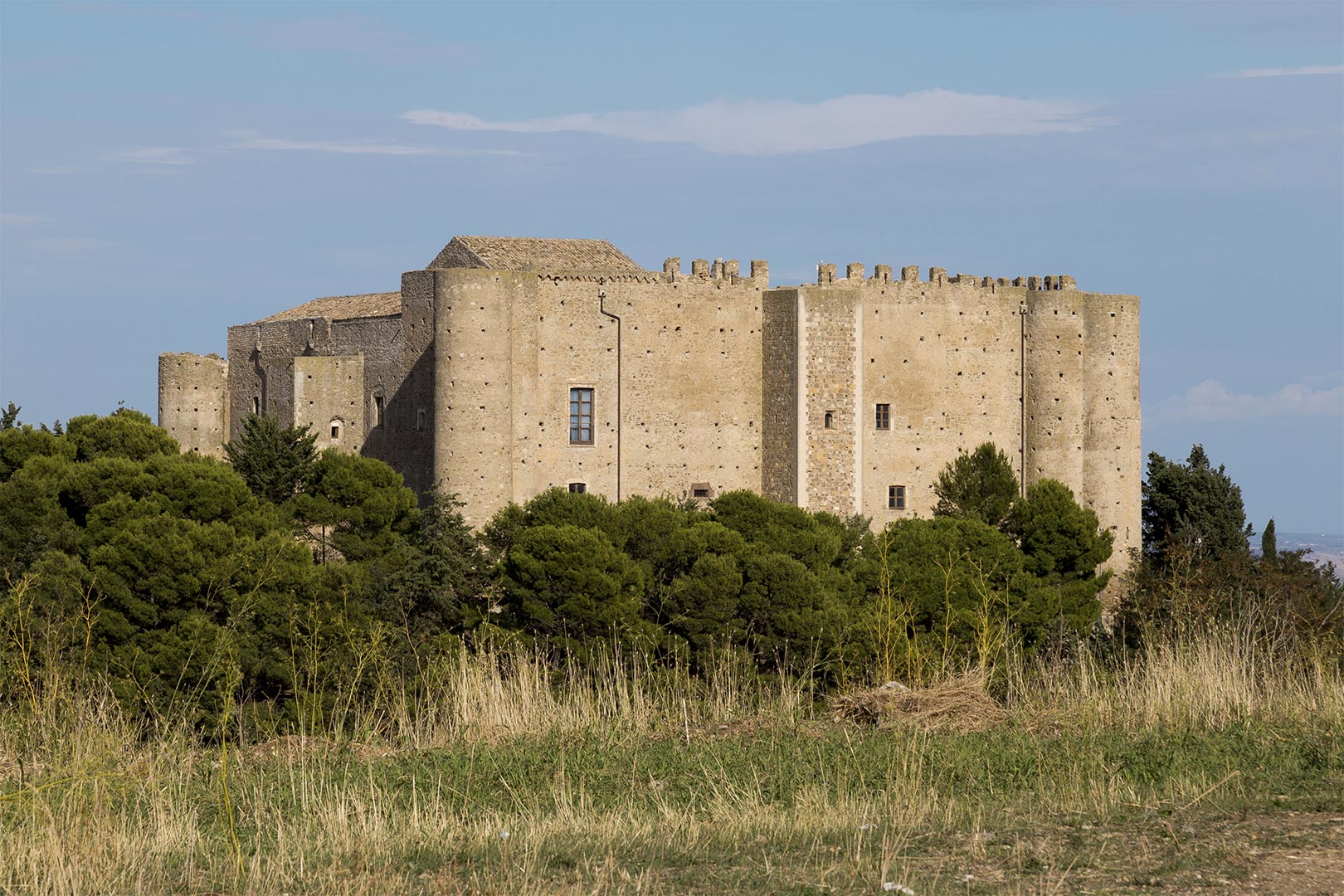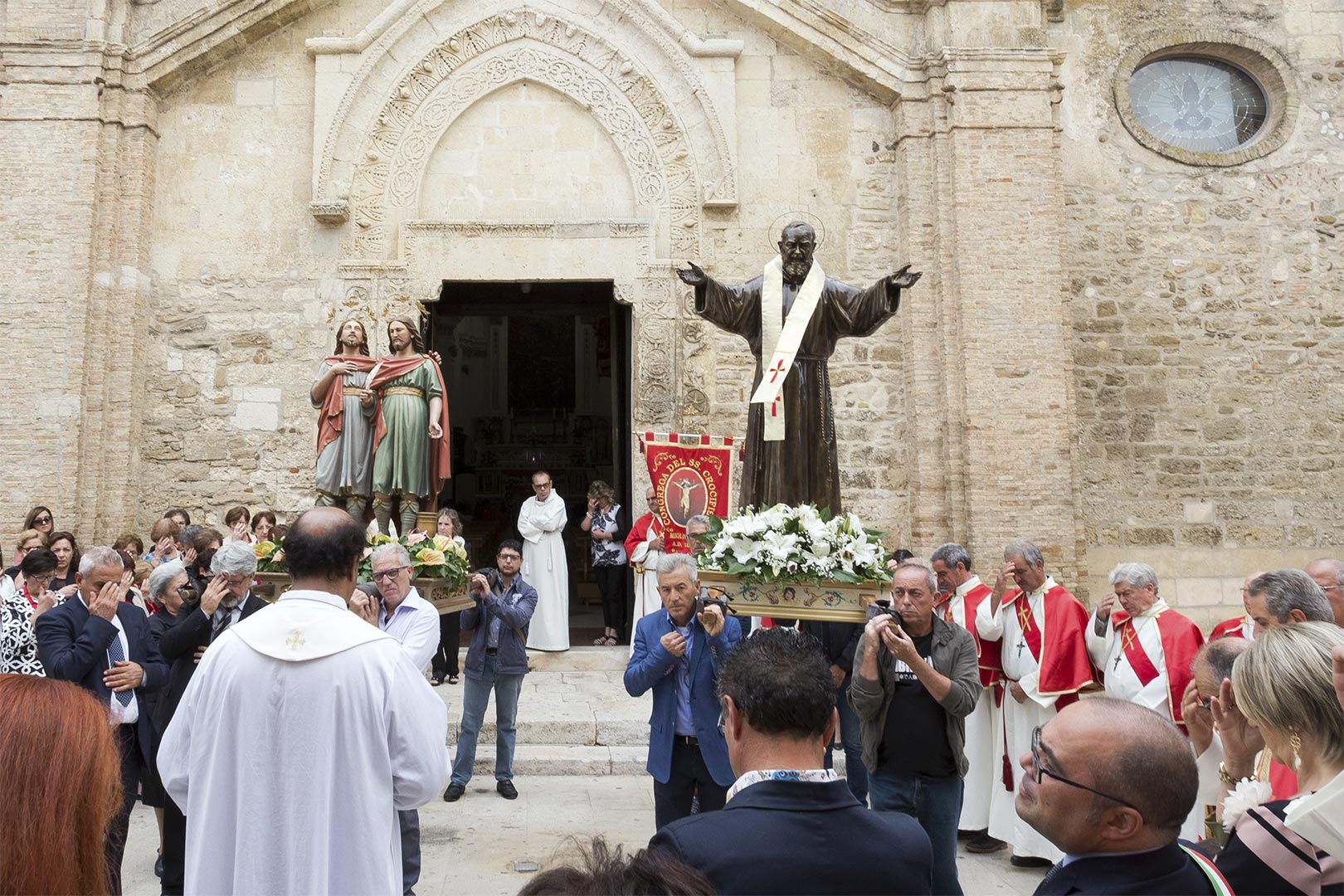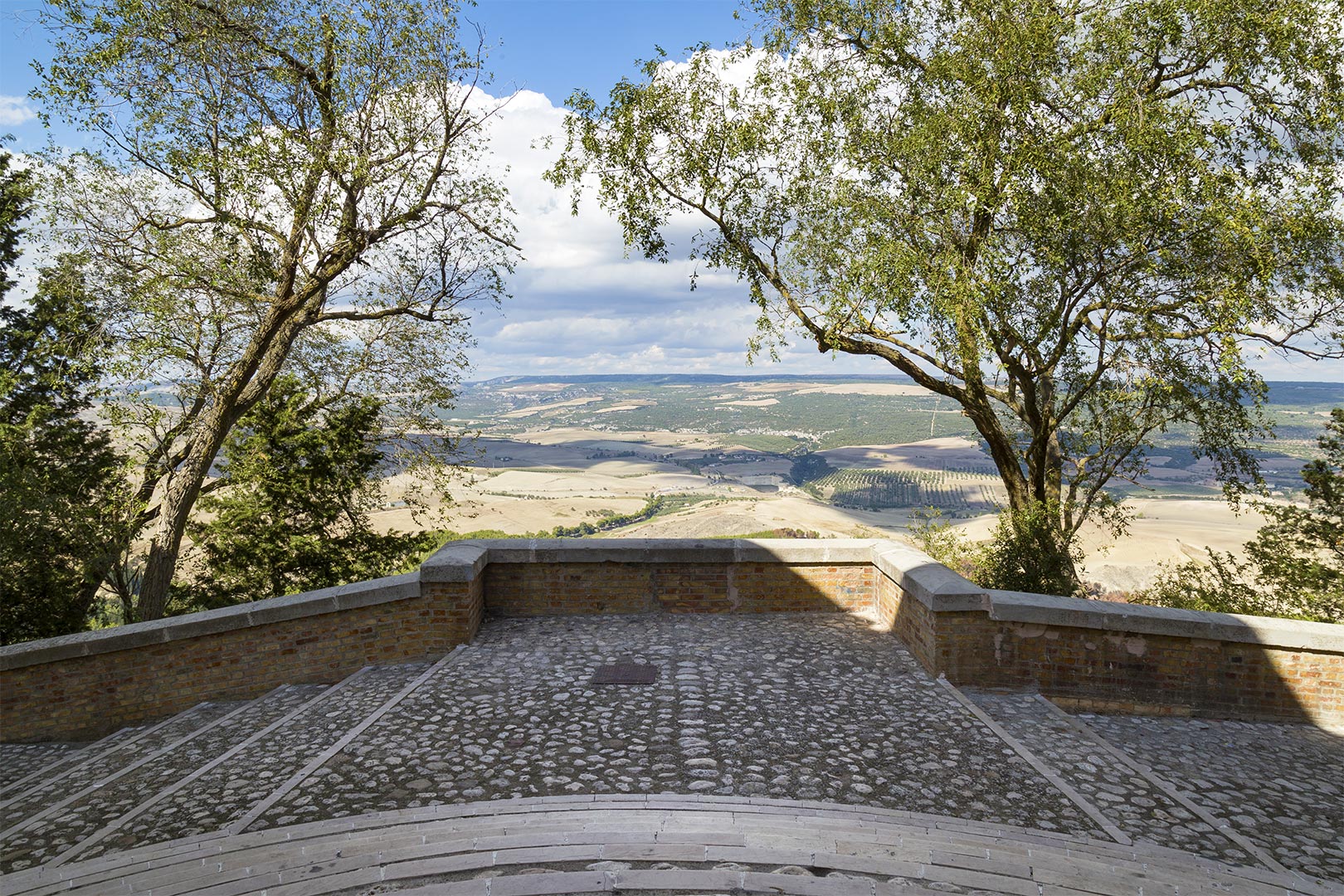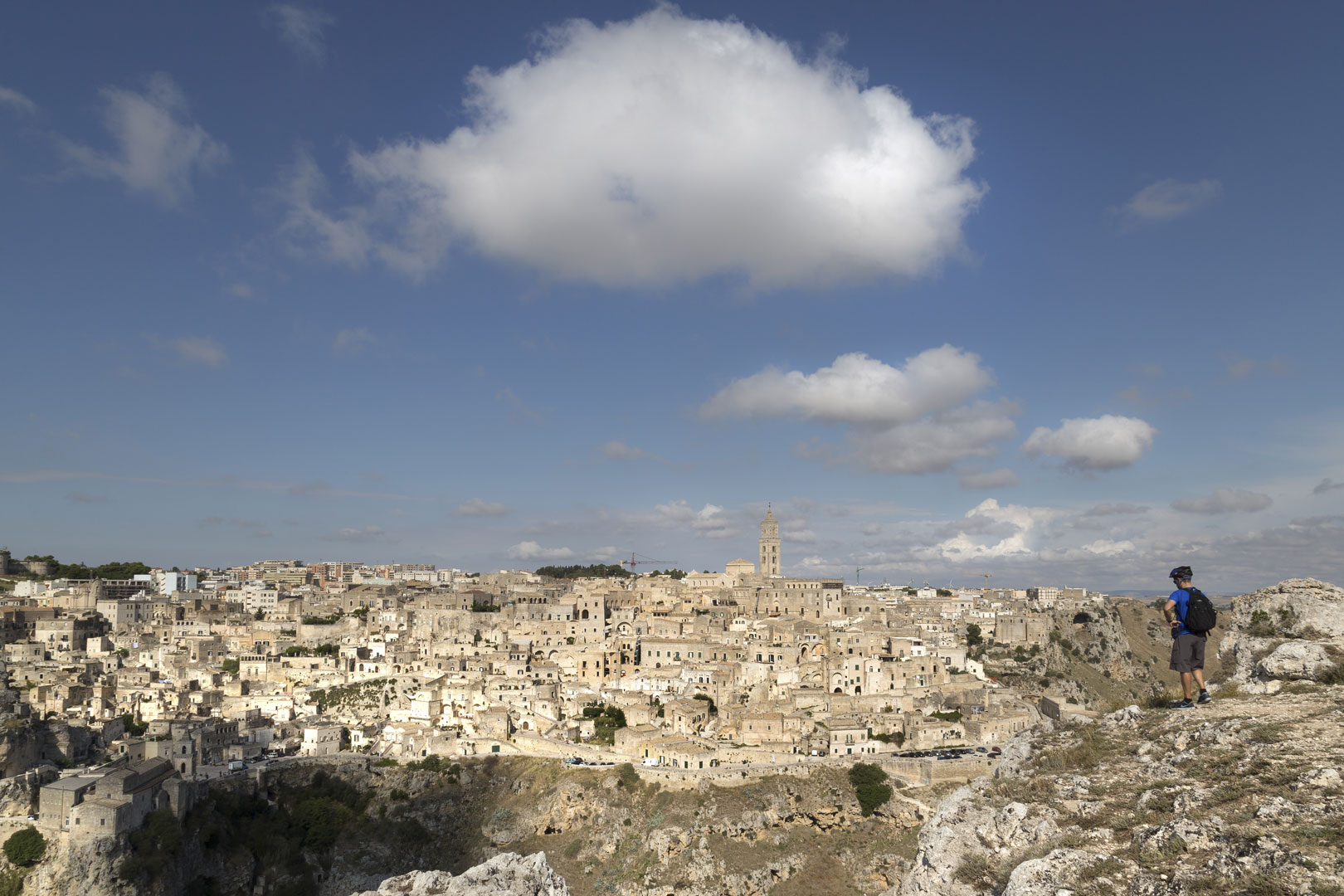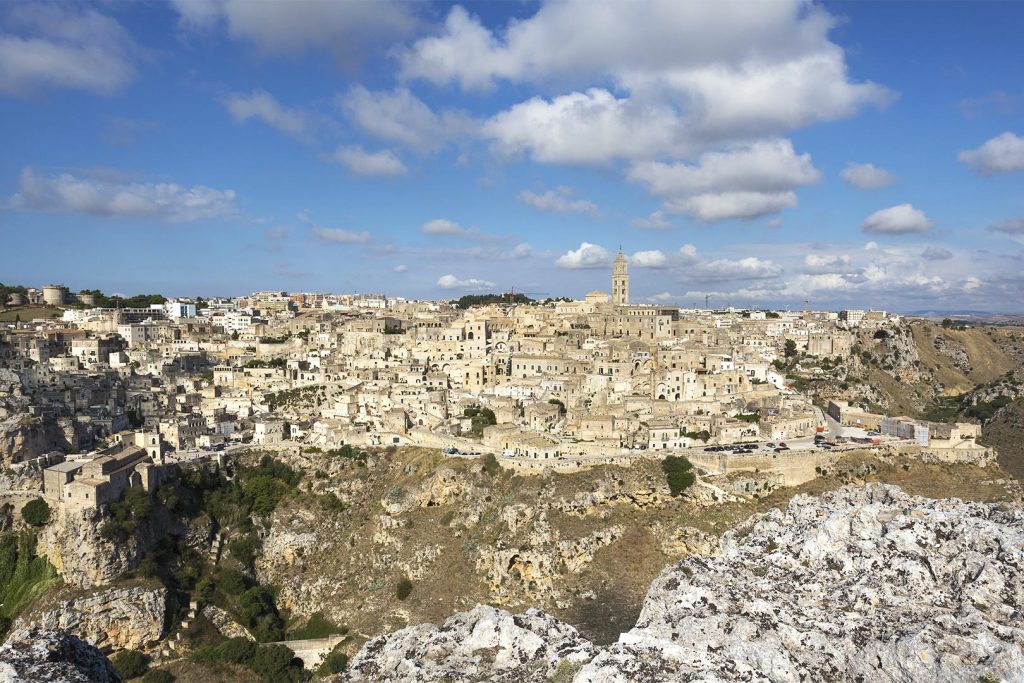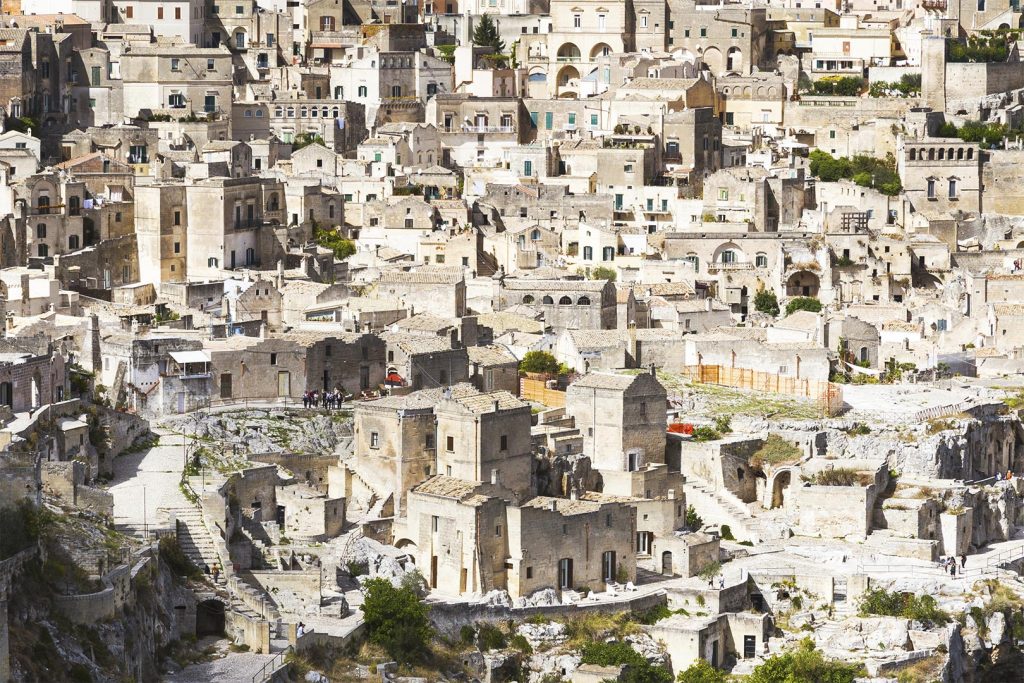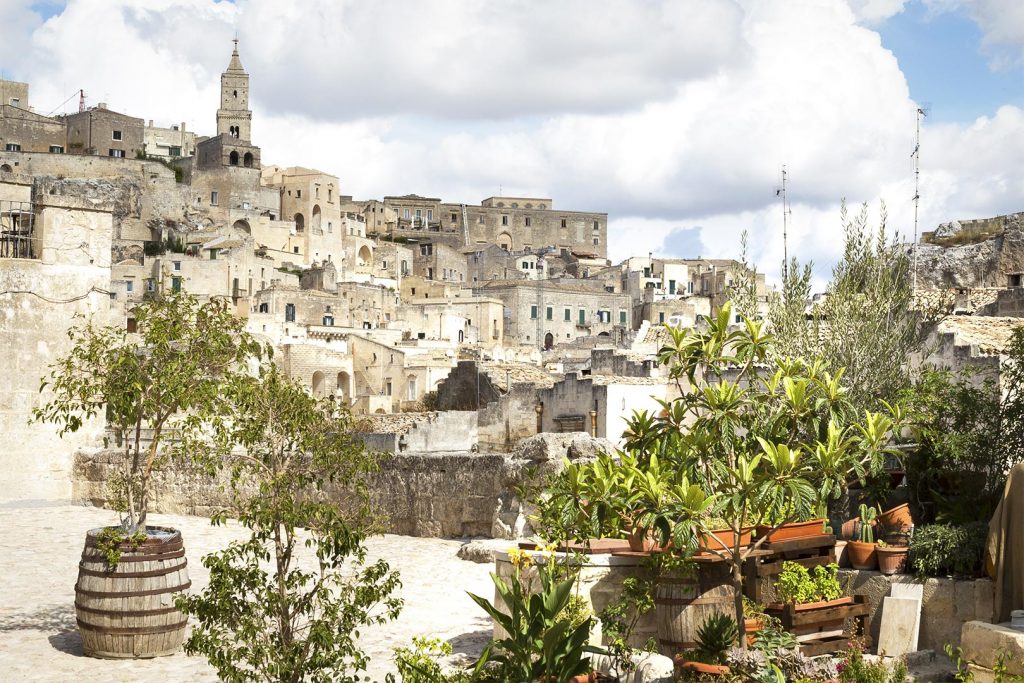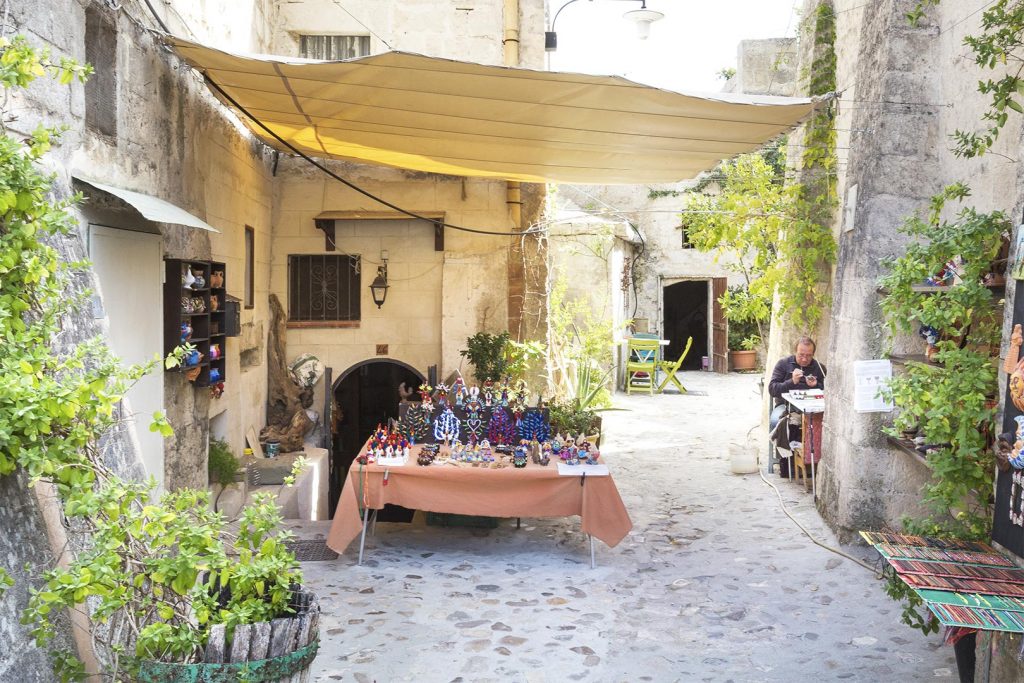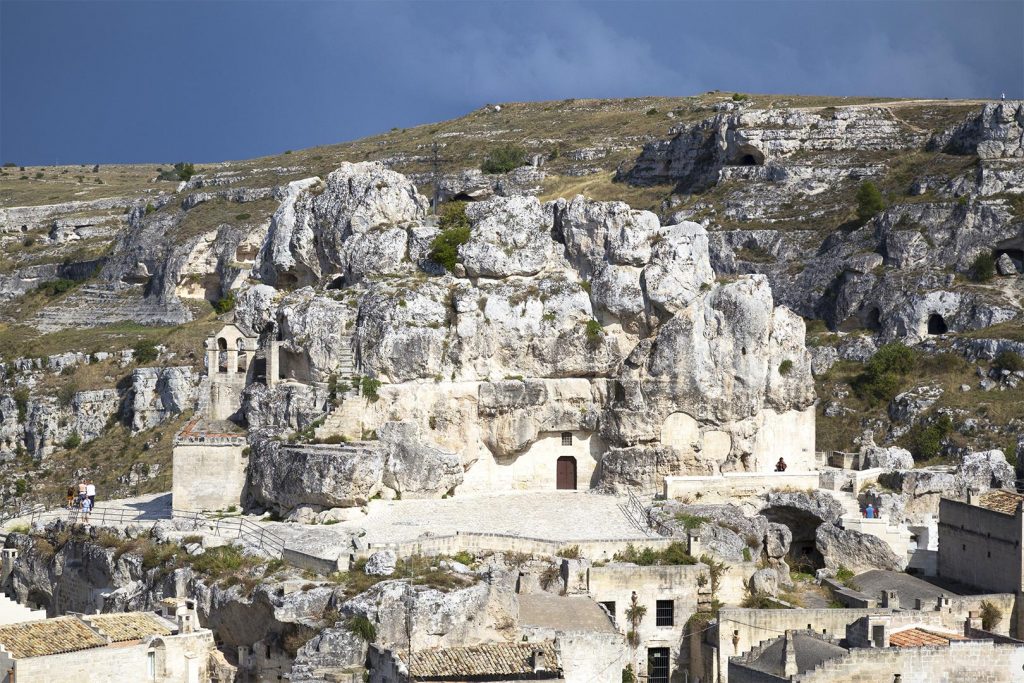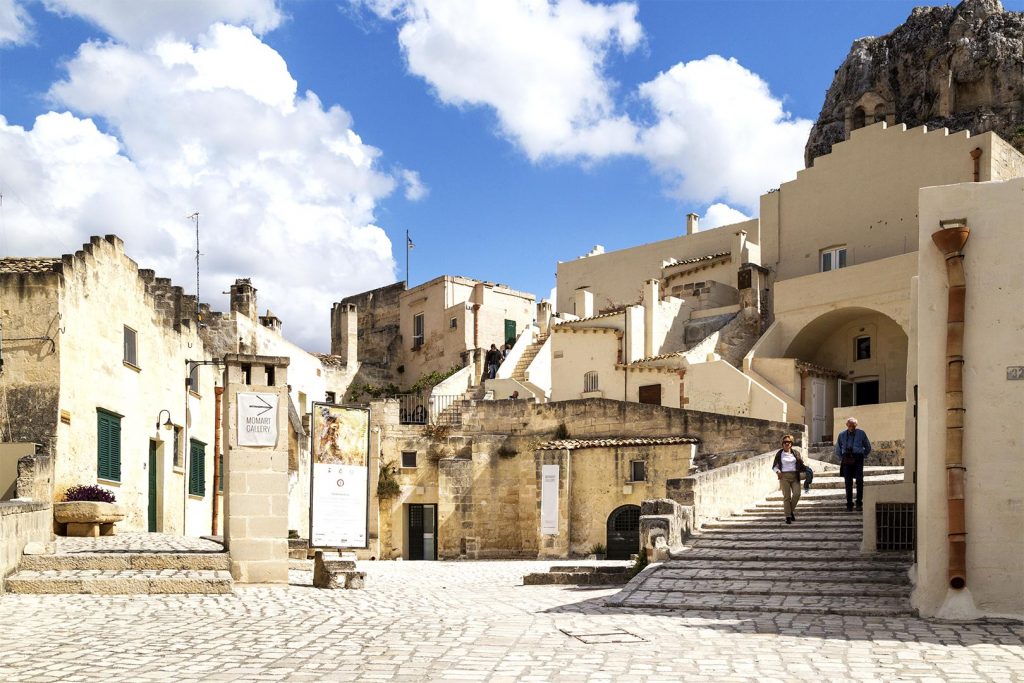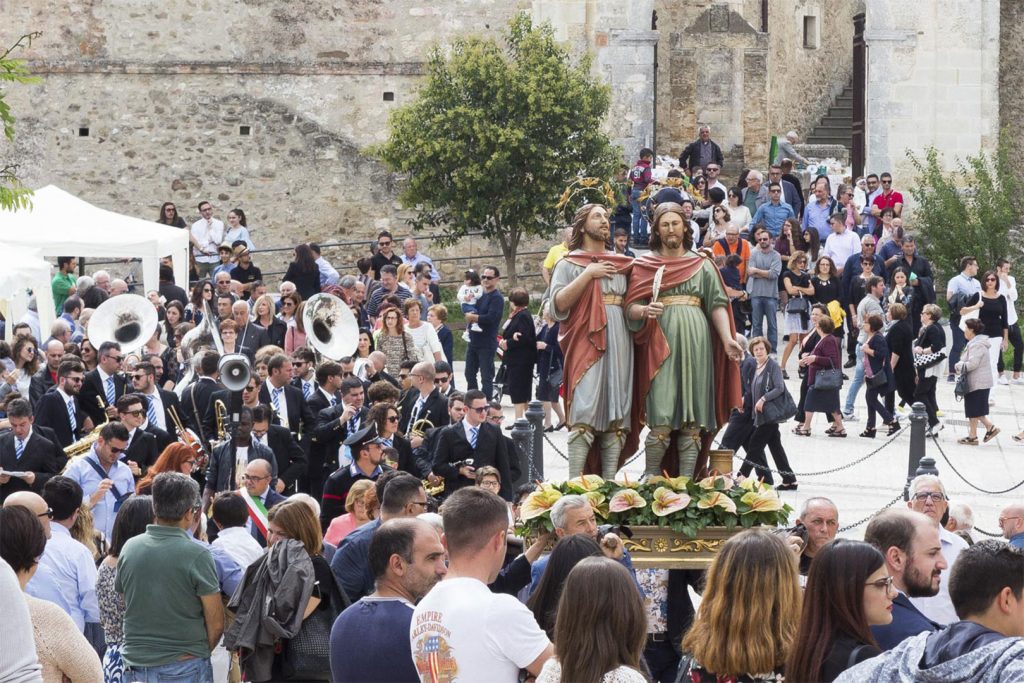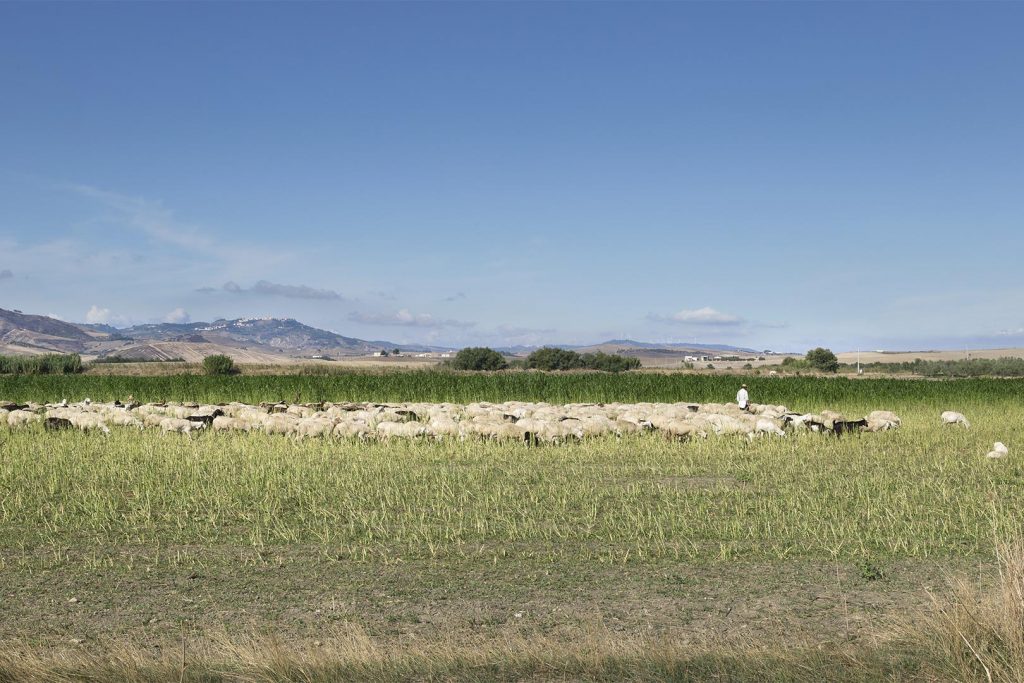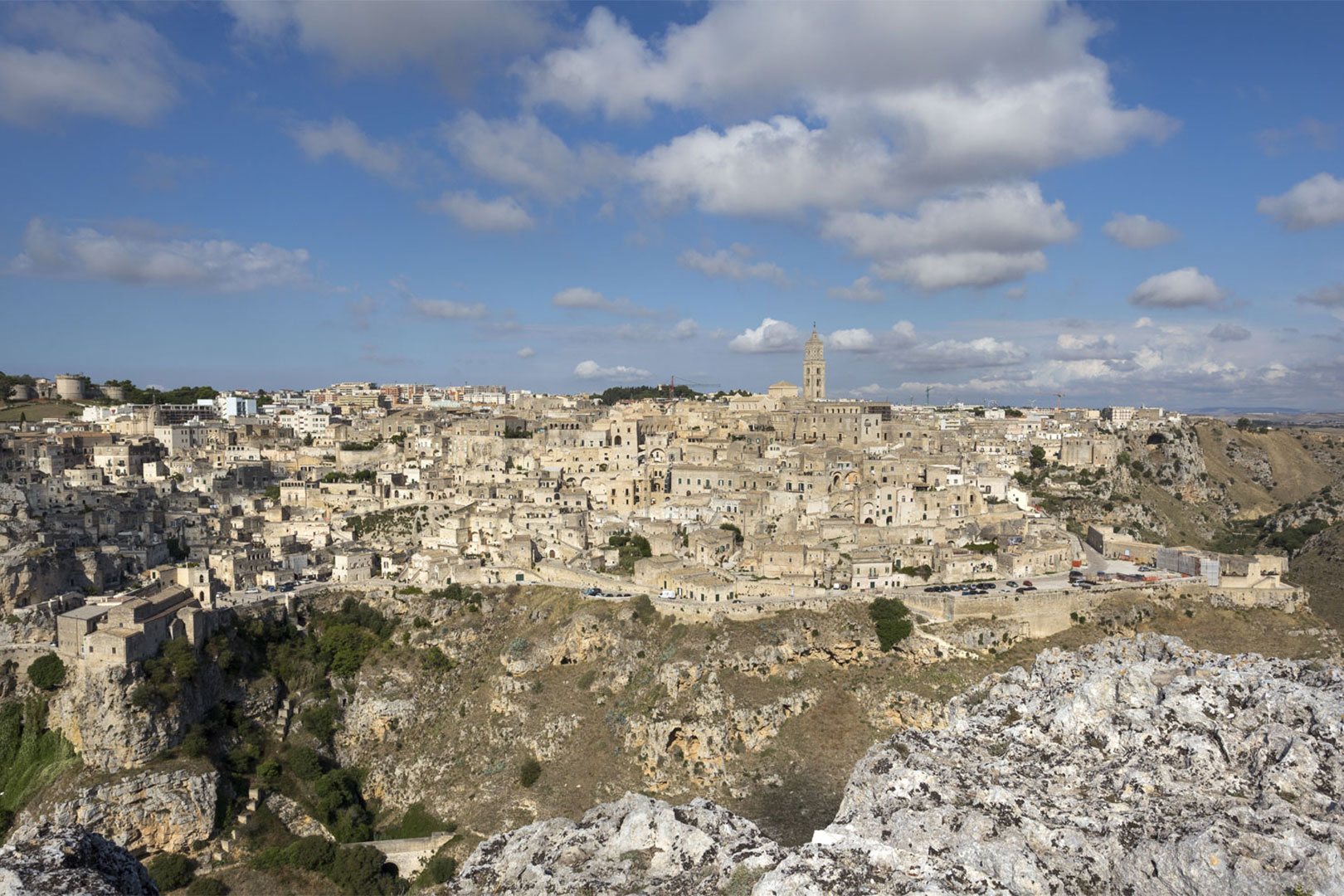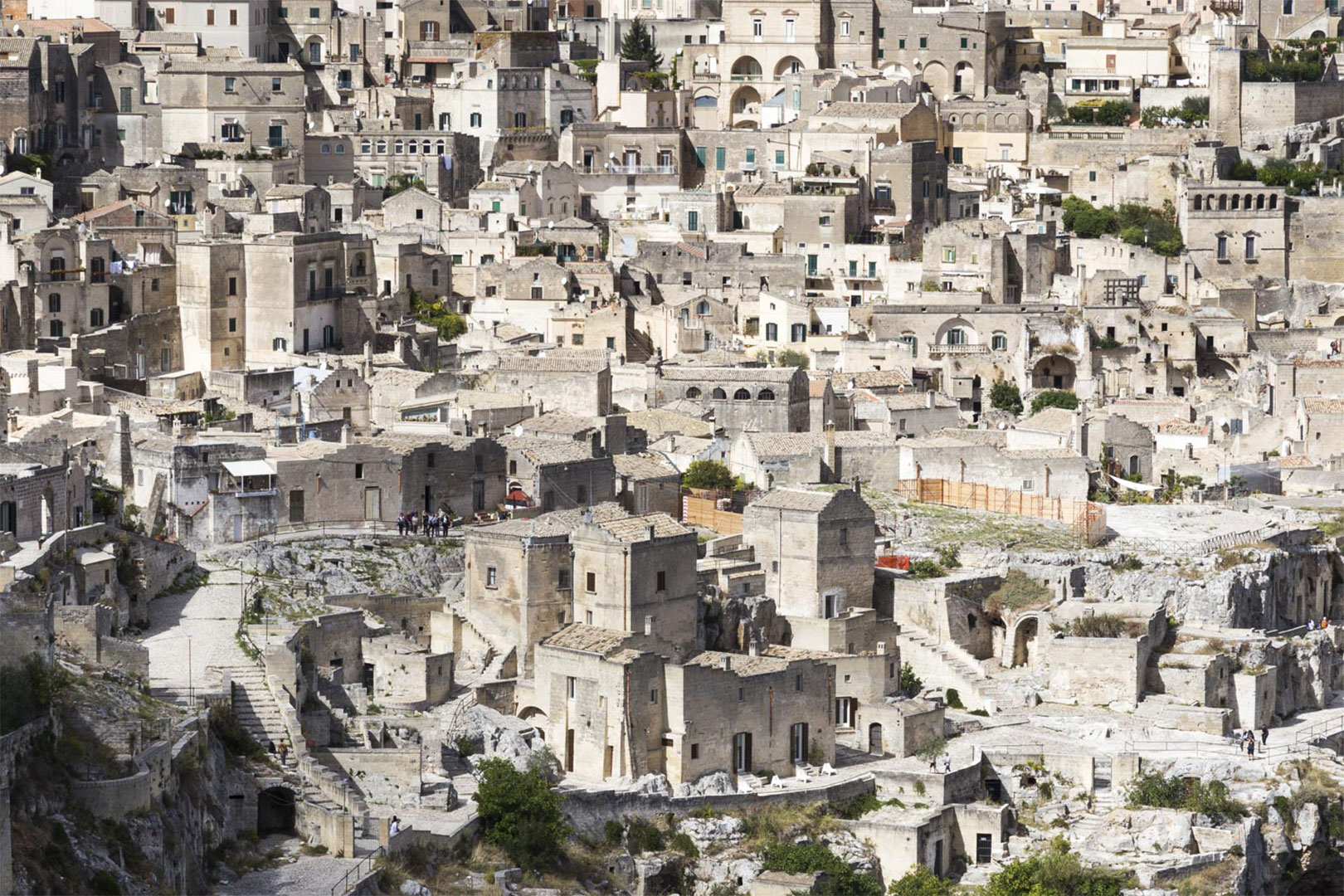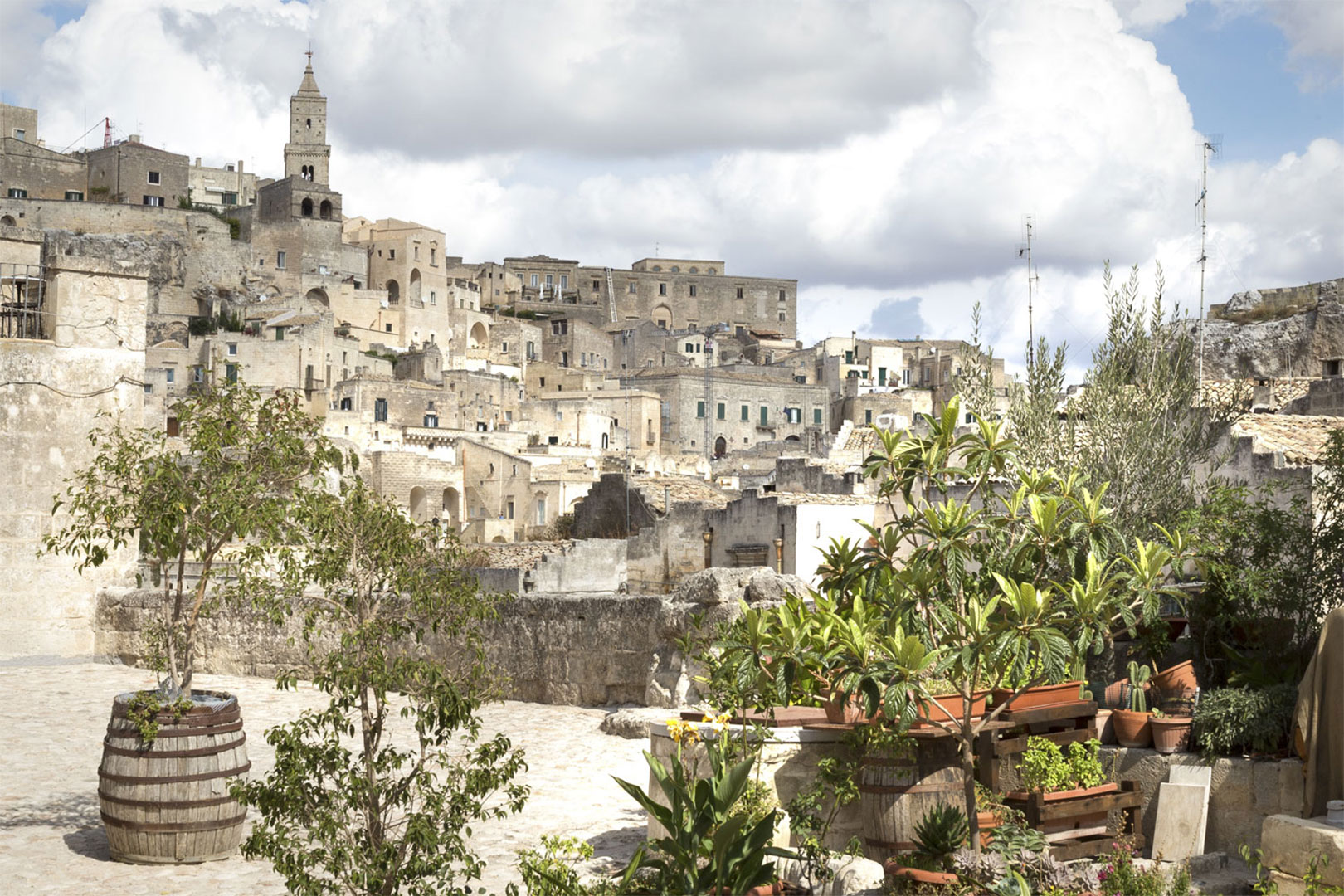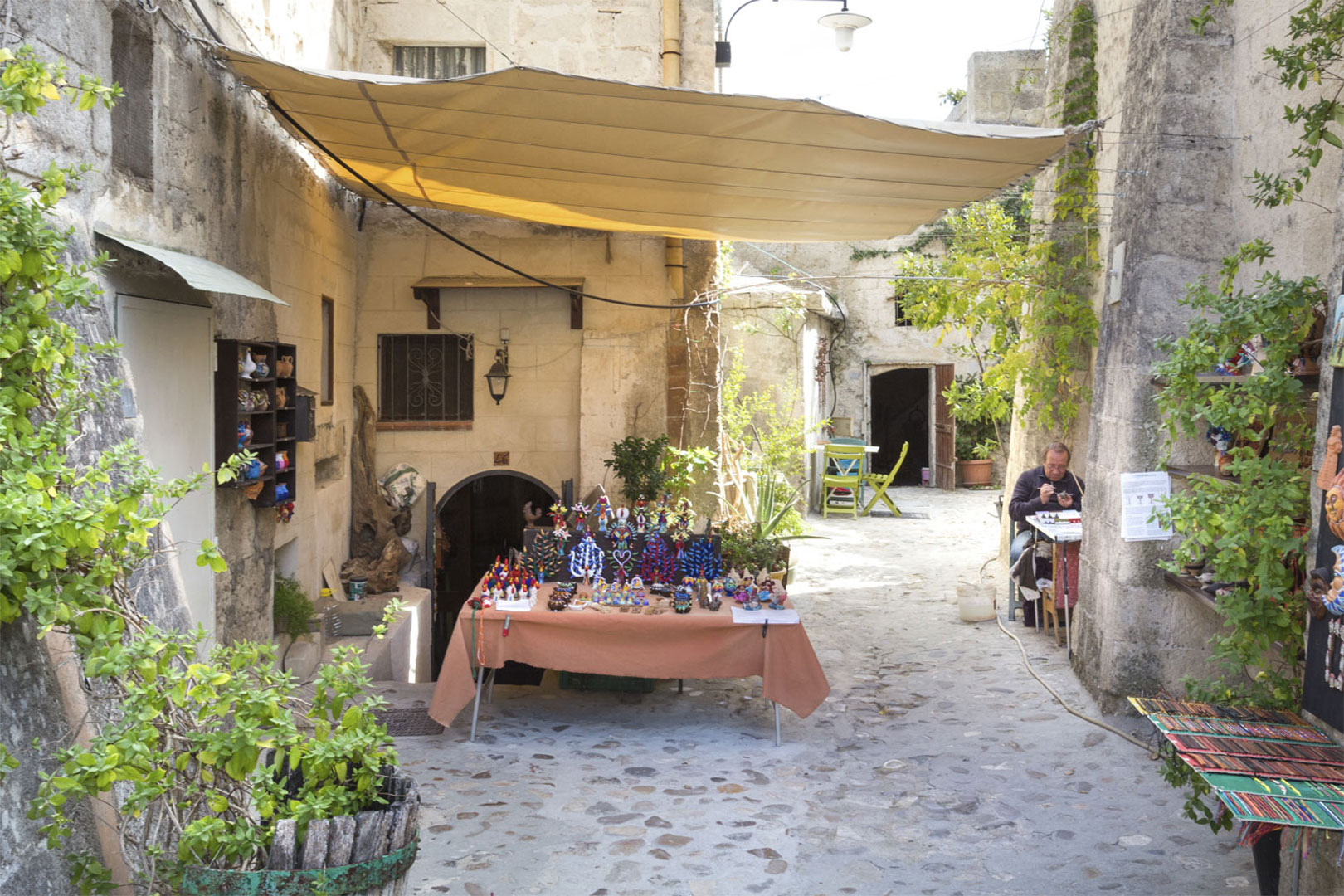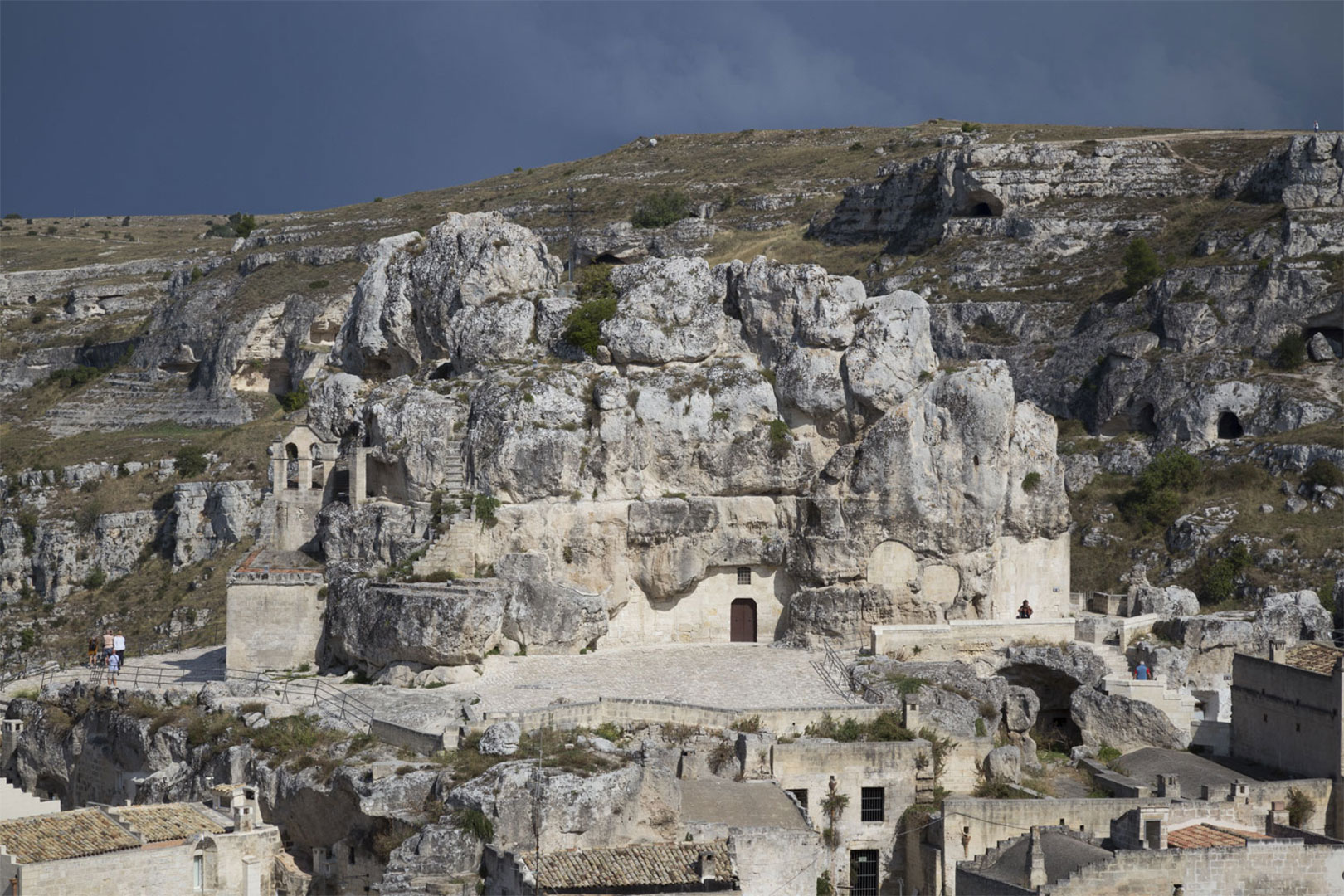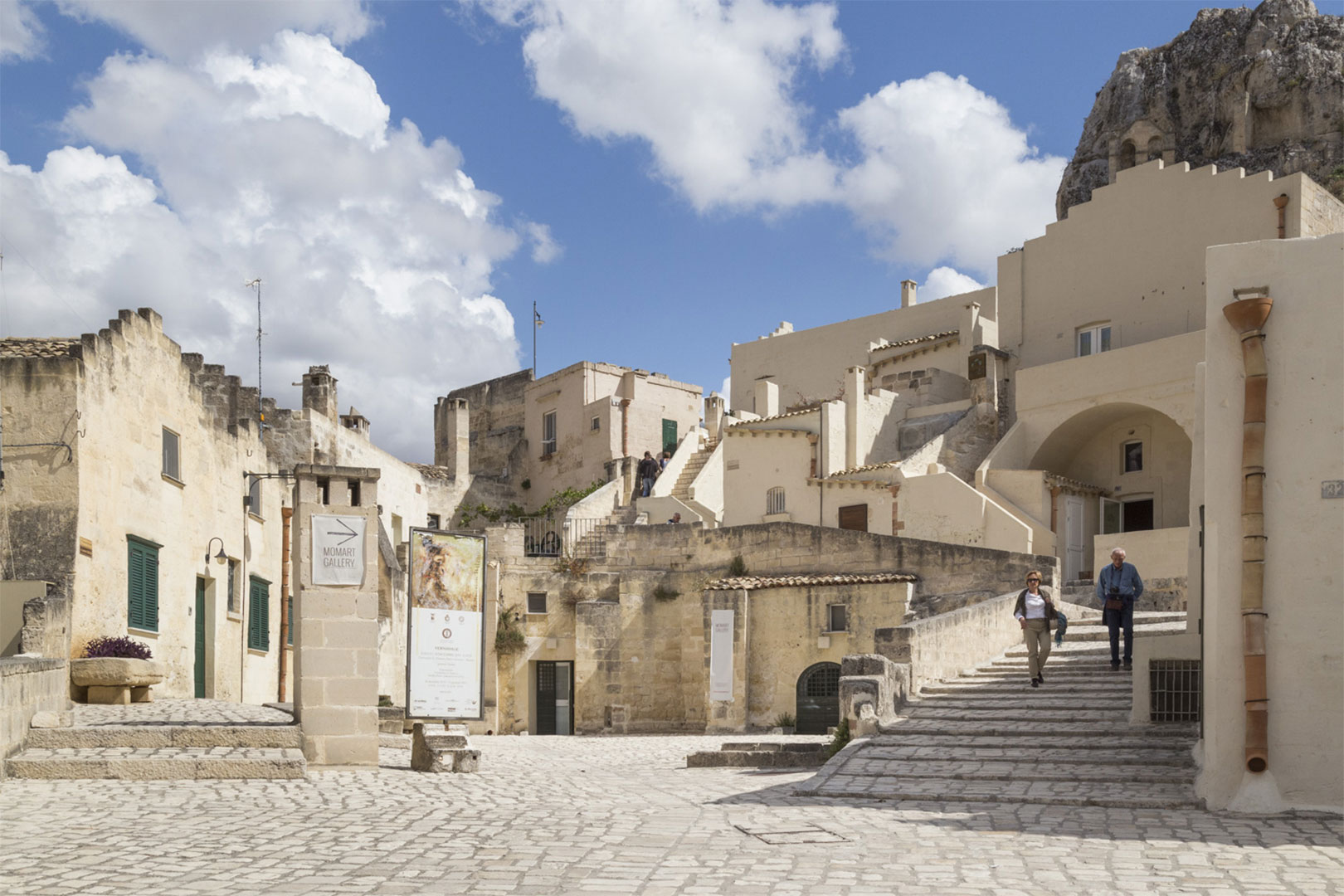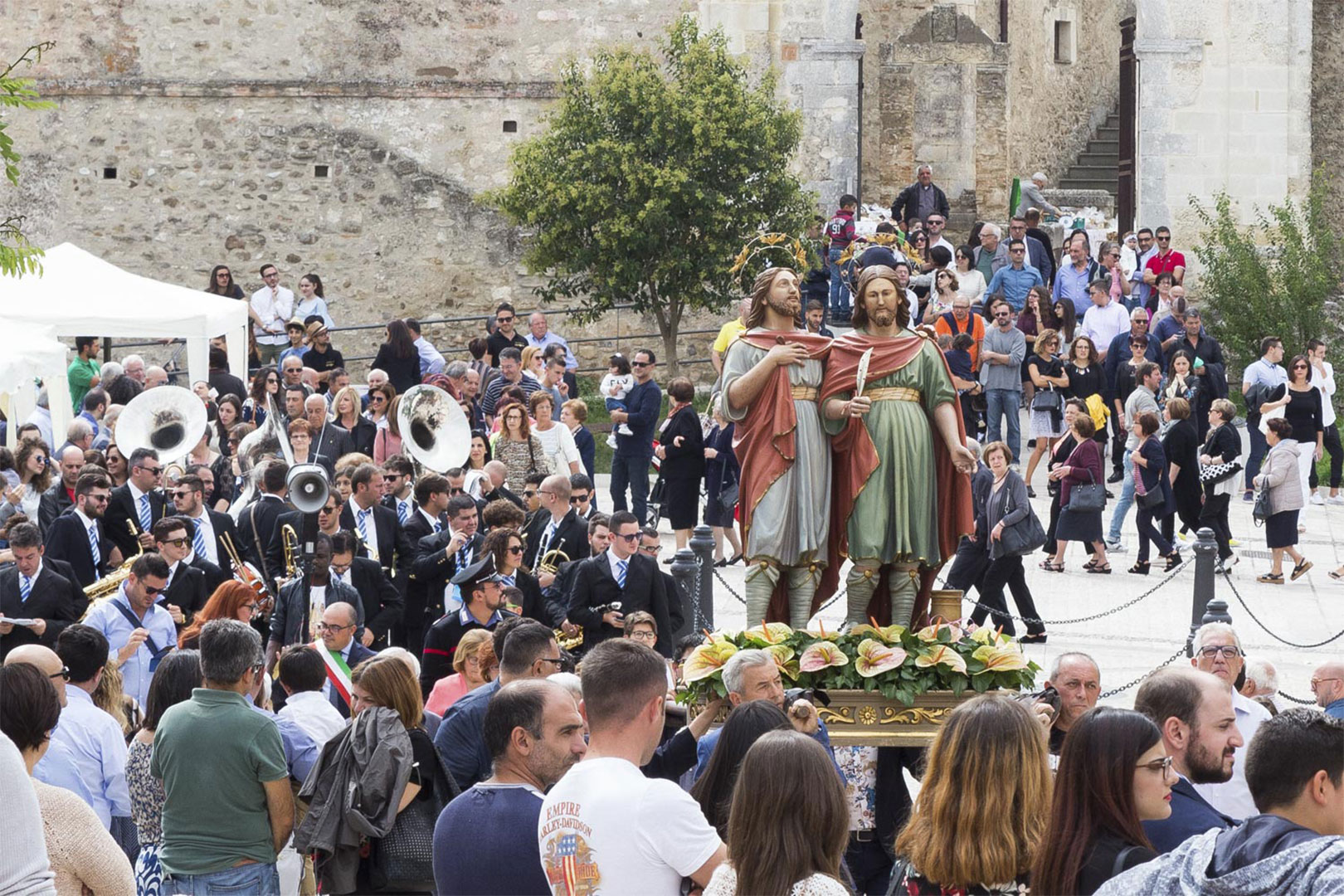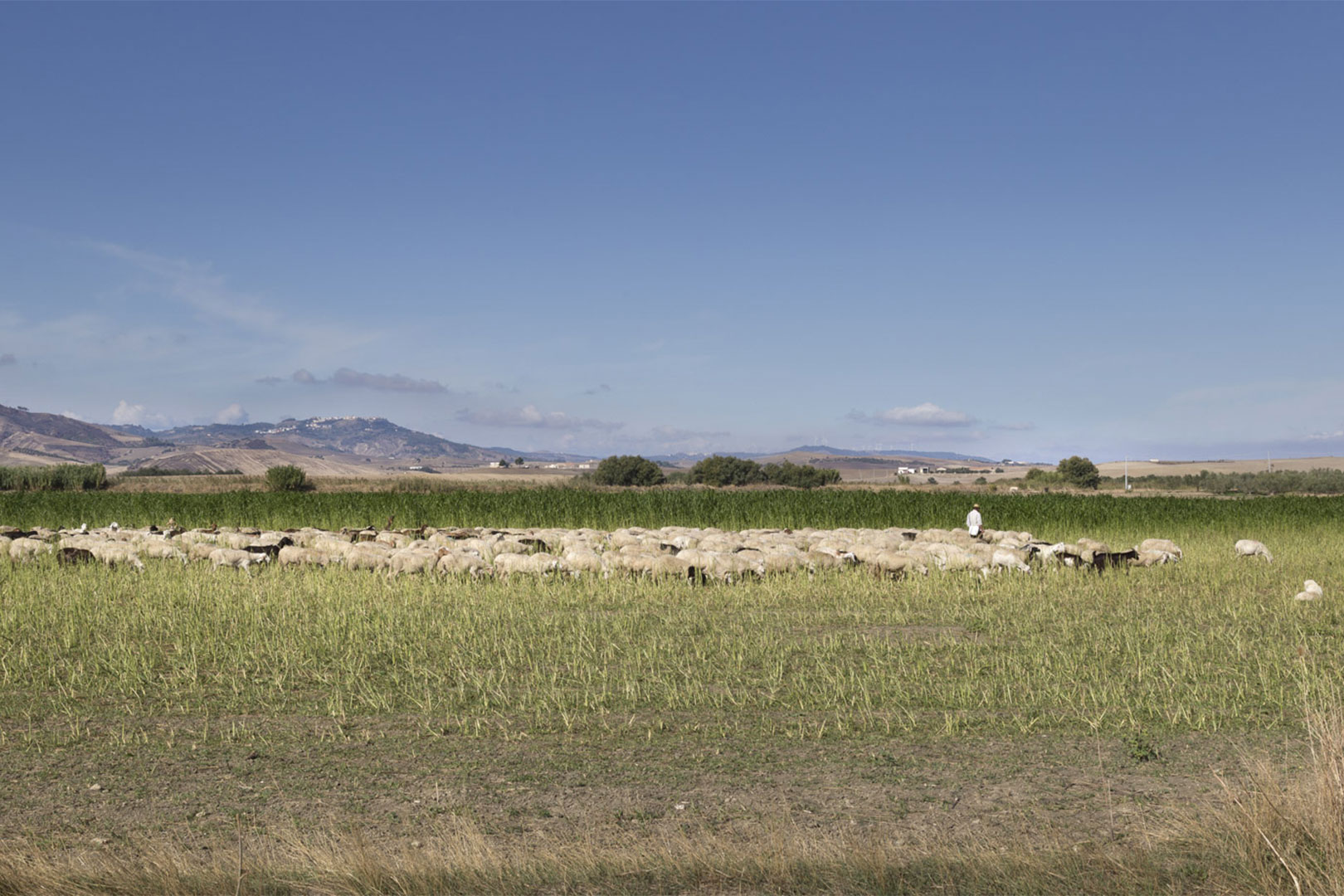The local area
The local area
Puglia and Basilicata, in southern Italy, are regions with deep historic connections to stone.
To the excavation and working of it. To the art of living in it.
–
At one time these two places were part of one area, the Land of Otranto, and the harmony and similarity between the two areas is reflected in the rich cultural heritage they both share. The uniqueness of the centuries-old relationship between man and the land has given rise to towns and architecture of incalculable artistic and cultural value, such as the Sassi of Matera (a UNESCO World Heritage Site), the Duomo in Lecce or the Castle in Otranto. Here, at the crossroads of past and present, the stone really is the prima materia spoken of in alchemy.
Puglia and Basilicata, in southern Italy, are regions with deep historic connections to stone. To the excavation and working of it. To the art of living in it.
–
At one time these two places were part of one area, the Land of Otranto, and the harmony and similarity between the two areas is reflected in the rich cultural heritage they both share. The uniqueness of the centuries-old relationship between man and the land has given rise to towns and architecture of incalculable artistic and cultural value, such as the Sassi of Matera (a UNESCO World Heritage Site), the Duomo in Lecce or the Castle in Otranto. Here, at the crossroads of past and present, the stone really is the prima materia spoken of in alchemy.
Salento
Puglia, IT
—
Salento. Sun, Sea and Wind.
At the tip of the heel of Italy’s boot, there is a peninsula lapped by the Ionian and Adriatic Seas, rich in history, amazing cities, where silvery expanses of ancient olive trees, sources of the most precious olive oil, meet infinite blue skies. It’s a land that has been touched by many cultures who colonized and settled and whose influence is evidenced by the numerous dialects still spoken today. Visitors can admire the ancient Saracen watchtowers spread along the coastline, or the remains of Greek and Roman buildings dotted around the unspoiled countryside. Salento, with its protective microclimate, is a flat area of red earth, cliffs, white beaches and fields of crops framed by traditional dry stone walls which extends from the Province of Lecce as far as Brindisi and Taranto.
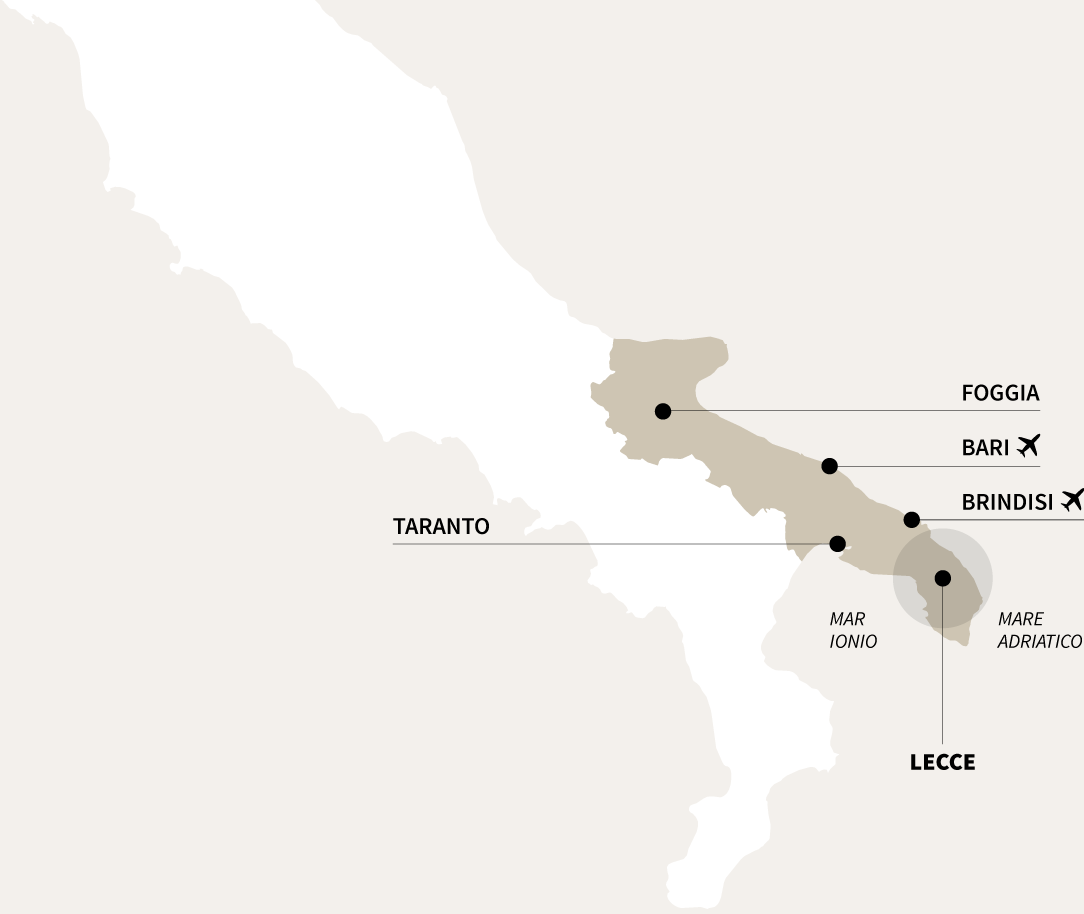
Salento
Puglia, IT
—
Salento. Sun, Sea and Wind.
At the tip of the heel of Italy’s boot, there is a peninsula lapped by the Ionian and Adriatic Seas, rich in history, amazing cities, where silvery expanses of ancient olive trees, sources of the most precious olive oil, meet infinite blue skies. It’s a land that has been touched by many cultures who colonized and settled and whose influence is evidenced by the numerous dialects still spoken today. Visitors can admire the ancient Saracen watchtowers spread along the coastline, or the remains of Greek and Roman buildings dotted around the unspoiled countryside. Salento, with its protective microclimate, is a flat area of red earth, cliffs, white beaches and fields of crops framed by traditional dry stone walls which extends from the Province of Lecce as far as Brindisi and Taranto.

Wherever you go, […] you see stones massing together, searching, arranging themselves (Cesare Brandi, “Pellegrino di Puglia”, Editori Riuniti, 2004). The peasant frees rocks from the fertile land and repurposes them in the furni and pagghiari (furnaces and dry stone toolsheds, both traditional rural constructions) or in the low dry stone walls that delineate his property, creating a simple improvised landscape where the sun highlights the dovecotes of the masserias, those grand residences housing the landowners.
The city of Lecce, nerve centre of the Salentine peninsula with its distinctive Baroque features is a UNESCO World Heritage Site, as is the Port of Otranto, a historic crossroads where peoples and culture meet.
In Puglia, the quarries of Gallipoli, Alezio, Cursi, Corigliano d’Otranto and Melpignano form the Lecce mining basin, one of the four production areas of the Apulian chain and source of the local stone pietra leccese (also known as pietra gentile – kind stone) and carparo. The quality of mining and processing here is internationally renowned and continues to bring wealth and economic development to the whole area, respecting and preserving tradition while making use of the latest innovations and state-of-the-art techniques. Stone from Puglia is one of the most sought-after materials there is, synonymous with luxury and elegance as well as being very energy efficient and excellent for acoustic insulation. Little wonder it is the material of choice for many of the world’s top architects.
There are hundreds of towns and villages dotted around the area, places where time seems to have stood still, like Melpignano, Cursi, Carpignano, Cannole, Castrignano, Martano and Corigliano. Every town has its own charm, whether it’s the weekly market with local produce or its craftsmen or its small trattorias hidden up tiny stone alleys. Each has its summer festival celebrating good food and conviviality and enlivened by little markets, enthralling music and popular dancing that continues long into the night.
Everywhere in Puglia you breathe in a unique atmosphere, full of vitality, something that attracts not only Italy’s elite but that of the entire world. People come for special occasions or long relaxing stays, seduced not only by the culture on offer but also the wealth of diverse activities available from golf and tennis, horse trekking to world class shopping at some of the most prestigious Italian fashion boutiques.
—
Griko
A few kilometres from Lecce, in an area known as Grecìa Salentina, the locals speak and write in Griko, a form of Greek originating in the 9th century. In fact, Puglia has a lot in common with Greece: the clusters of unquestionably solid, local dwellings are reminiscent of typical Greek whitewashed buildings. Because of its strategic geographical position in the Mediterranean, Salento was highly fought over area by civilizations in the past. The first settlements date back to the 8th century BC, when the area was part of Magna Grecia. People from the continent arrived, settling in coastal areas, bringing with them their language, their traditions and their building methods.
–
Salento beaches
With over 800 kilometres of beaches and cliffs, Puglia has the longest coastline in Italy and ten of its beaches have won Blue Flag status from the FEE (Foundation for Environmental Education).
–
Salento olive oil
Healthy eating is part of Salento’s culture and it could not be otherwise: Puglia is responsible for 70% of Italy’s extra-virgin olive oil and 15% of the world’s production.
INSCAPE masserias are located just 15 minutes from all this, set in centuries-old olive groves a short distance from the beach and within easy distance of the international airports of Bari and Brindisi. These geometric buildings of golden stone are set in hectares and hectares of glorious greenery against a background of aquamarine, a little piece of paradise where you can enjoy the best of the countryside and the sea, yet are still close to the energy of the city.
INSCAPE masserias are located just 15 minutes from all this, set in centuries-old olive groves a short distance from the beach and within easy distance of the international airports of Bari and Brindisi. These geometric buildings of golden stone are set in hectares and hectares of glorious greenery against a background of aquamarine, a little piece of paradise where you can enjoy the best of the countryside and the sea, yet are still close to the energy of the city.
Matera
Basilicata, IT
—
For thousands of years the Gravina river has cut its way through the Murgia Plateau, the area between Puglia and Basilicata, freeing the limestone rocks as it goes. Man has dug it, carved it, frescoed it and lived in it.
Matera has been called many things in its long history: City of Stones, Shame of Italy, European Capital of Culture 2019. Its story is exceptional, difficult and beautiful, testament to the most visceral relationship between man and nature, culture and land and which has left an extraordinary legacy in its unique landscape and artistic heritage.
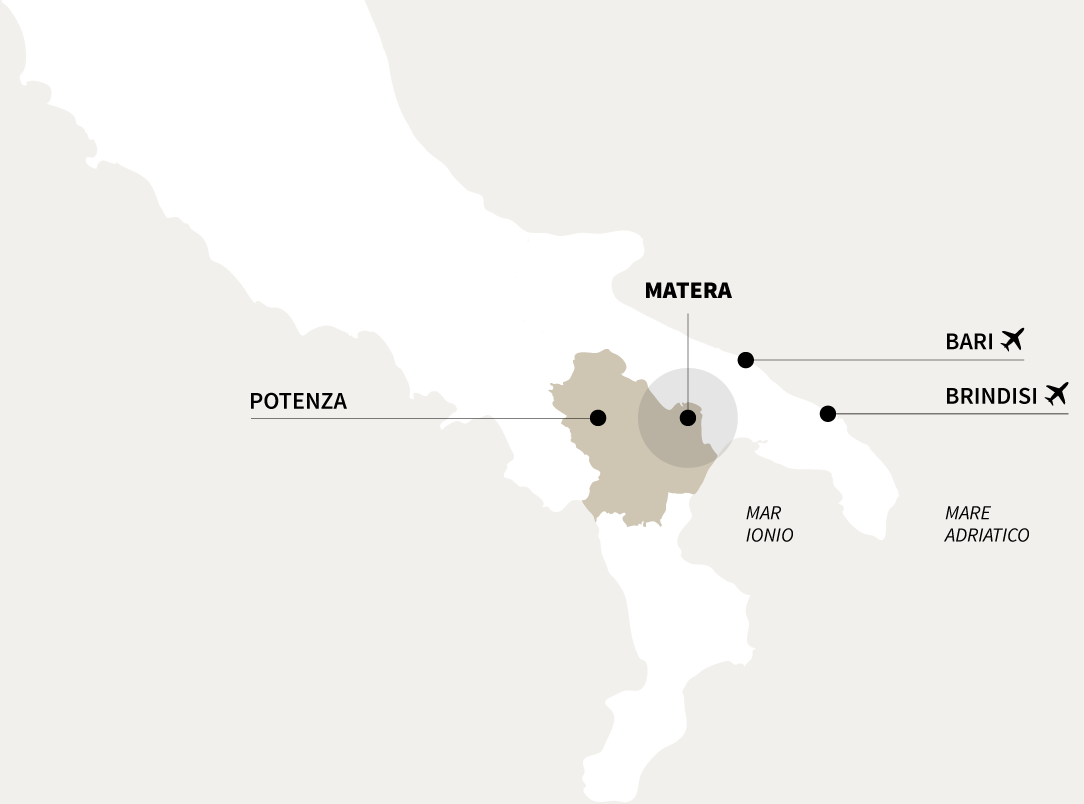
Matera
Basilicata, IT
—
For thousands of years the Gravina river has cut its way through the Murgia Plateau, the area between Puglia and Basilicata, freeing the limestone rocks as it goes. Man has dug it, carved it, frescoed it and lived in it.
Matera has been called many things in its long history: City of Stones, Shame of Italy, European Capital of Culture 2019. Its story is exceptional, difficult and beautiful, testament to the most visceral relationship between man and nature, culture and land and which has left an extraordinary legacy in its unique landscape and artistic heritage.

Matera’s cave dwellings and churches, underground storage reservoirs and the Rioni Pietrosi neighbourhoods of Sasso Barisano and Sasso Caveoso tell the story of the simple, basic life lived by a community made up mostly of shepherds, peasants and craftsmen who lived on exquisite bread (Matera’s bread has an I.G.P. quality standard award), thyme and oregano from Murgia and the freshest cheeses. A community that lived in harmony with the land, making the most of every resource it had to offer. When they needed more space, they dug out the living rock (the soft tufo under the soil) to make rooms, cellars and reservoirs to collect rainwater. In this way the ancient troglodyte dwellings gradually turned into a city, with houses, churches and streets, all created from stone. Matera and its land are the unique custodians of building knowledge and techniques all connected to the working and assembly of stone that has been handed down from generation to generation.
After being uninhabited for years (many of these stone dwellings had been abandoned continuously from the Bronze Age until the 1950s) and having suffered the anguish of forced depopulation imposed by the Italian government in order to relocate the population to more salubrious areas, the Sassi is now a UNESCO World Heritage Site with numerous decentralized accommodation solutions – full of boutique hotels, restaurants and private homes.The historic centre has been completely reinvented by a flourishing community of young artists and small scale entrepreneurs and they have made it such a vibrant city that it has been awarded the title of European Capital of Culture 2019: art shows, festivals and concerts are now the order of the day. Today, the Sassi is teeming with bakeries, pubs, artisan workshops and cultural initiatives offering a warm southern Italian welcome to visitors from all corners of the globe.
The humble architecture is now celebrated for its simplicity, a perfect counterfoil for more contemporary design. Losing yourself as you walk through the stone streets of the Sassi is a thrilling experience, there’s always something new and exquisite to discover: a flowered courtyard, a hidden little piazza, a carved stone staircase. The facades of the buildings, at first glance comparatively unremarkable, reveal their sheer architectural inventiveness to those who look carefully. It’s an incredible natural film location that has attracted directors from all over the world wishing to make their movies there.
Up top, walking through the 16th and 18th century city, you get constant glimpses of the horizon through the urban fabric: the surrounding undulating landscape and its carpet of wheat fields dotted with the cottages of the farmworkers and the masserias of the landowners who have always silently worked the land and looked after its produce. An enchanting, unspoiled interior made up of wooded hills, green meadows, vineyards and lakes, which for many is reminiscent of the Tuscan landscape and the Crete Senesi in particular.
—
Traditional masserias in Matera
In the area around Matera the masseria was the epitome of an ancient agricultural tradition of land ownership, it represented a hierarchical organization that remained unchanged for centuries.
A typical feature was the courtyard, around which all the services were situated, delineated by a series of buildings for the use of the landowner, the farm manager and the workers, stalls for the animals and various rooms used for preparing and preserving the produce. And from these agricultural masserias there emerged the fortified masserias, notable for their particular shape and architectural style, isolated sentinels surveying the vast estate.
It’s here, in the countryside of Matera, that you’ll find the INSCAPE masserias:
close to the sea and the mountains, easily reached from Bari and Brindisi
international airports and just a few kilometres from Puglia.
As well as Matera, there are also nearby towns to discover like Borgo Venusio, Irsina, Timmari, Tricarico, Pietrapertosa and Castelmezzano in the Lucanian Dolomites National Park; or Miglionico, Pomarico, Ferrandina, Craco, Bernalda, Metaponto and Montescaglioso. There’s always some new natural site to visit or cultural event to enjoy.
It’s here, in the countryside of Matera, that you’ll find the INSCAPE masserias:
close to the sea and the mountains, easily reached from Bari and Brindisi
international airports and just a few kilometres from Puglia.
As well as Matera, there are also nearby towns to discover like Borgo Venusio, Irsina, Timmari, Tricarico, Pietrapertosa and Castelmezzano in the Lucanian Dolomites National Park; or Miglionico, Pomarico, Ferrandina, Craco, Bernalda, Metaponto and Montescaglioso. There’s always some new natural site to visit or cultural event to enjoy.



